After our road trip in the Atacama Desert and visiting Mendoza, we’re back in Chile! Valparaíso, or Valpo to those in the know, is a city in South America that stands out. Alternative, bohemian, vibrant, perched on its Cerros, it has a way of charming travelers passing through… To be honest, Valpo is the second city after Sydney where we could actually see ourselves settling down. It’s really a wonderful place to live, and it’s no coincidence that we stayed here for five days! Ready to visit Valparaíso? 😉
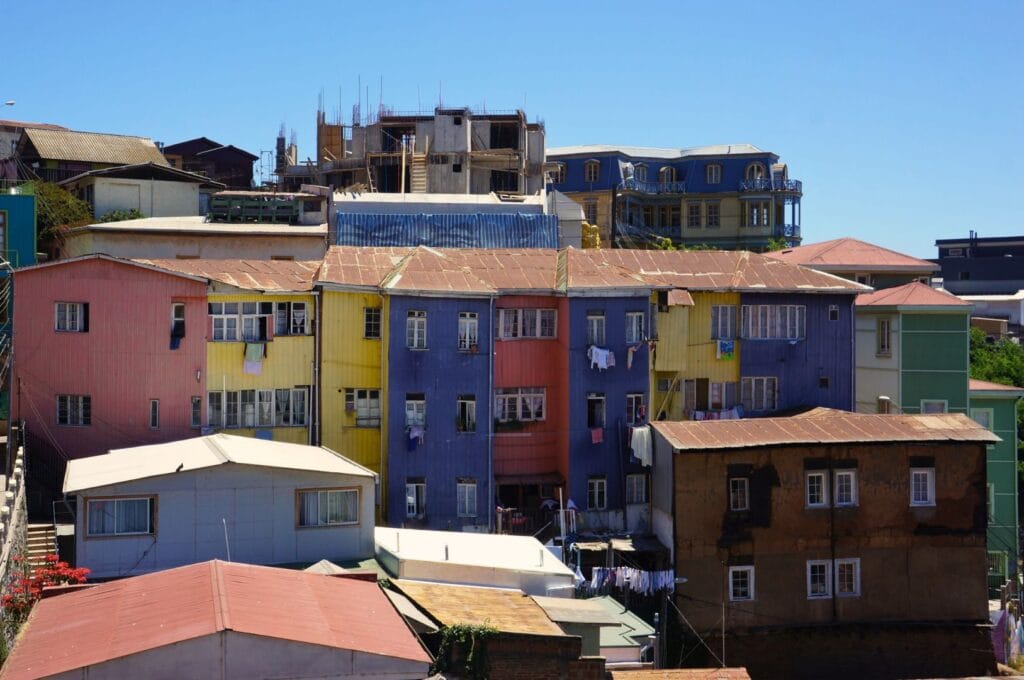
We took this trip in 2014, but the article was completely revised and updated in October 2024. If you see any price changes or have additional information that might be relevant, please feel free to leave us a comment!

Introduction to this unique city
What makes Valpo so special? Is it the fact that it’s bordered by the Pacific Ocean and home to Chile’s main port? Or maybe that after just a few days in the city, you already feel like moving there?
The colorful tin houses
Being a port city, the story goes that the Porteños (the name for people from a port city) used the tin left behind by ships in the port during the golden age of maritime traffic, before the creation of the Panama Canal. They used it to cover and protect their adobe houses—made of clay mixed with water and straw. Since the tin tended to rust in the wind and humidity, people started painting their homes with the paint used on ships. And as you might guess, this paint is both durable and extremely colorful! After all, you need to see those ships clearly, right? This is said to be the origin of the colorful metal touch that makes Valparaíso so unique.
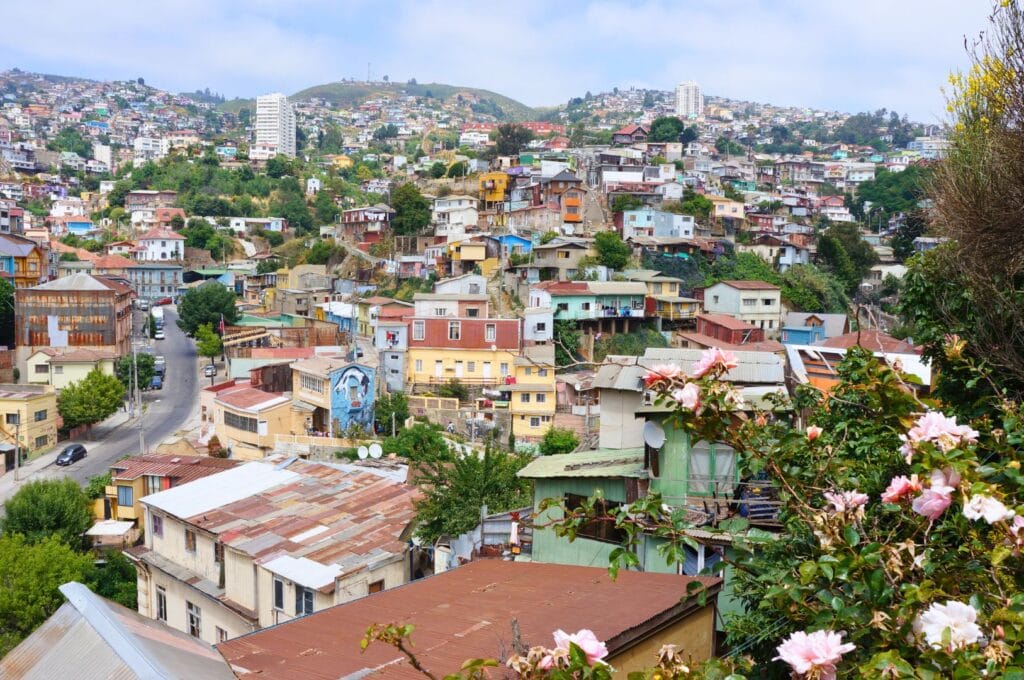
The Cerros or hills
When travelers talk about Valpo, you’ll likely hear stories of endless stairs and sore muscles. Sure, there are over 40 hills in the city, but we didn’t find it insurmountable. On the contrary, it’s one of the city’s charming characteristics. The residents had to adapt their homes to the city’s unusual topography. You’ll notice that houses often have four or five floors on one side and only one or two on the other, as they’re built on very narrow ridges. We absolutely loved the maze of alleys, staircases, and passages that make every visit to Valparaíso surprising. You never feel like you’re passing the same place twice!
Street art
It’s simple—I’ve never seen so many murals in one city. It’s incredible! At every street corner, on every wall, there’s something new to discover. Sometimes, entire building facades are covered in artwork! And these aren’t just random tags like “F*** the government” or “F*** the police.” No, no! These are true works of art, and street art takes on its full meaning here. Every walk through the streets of Valparaíso is unique. You’re always discovering new, interesting details or amusing phrases. Wandering through these alleys is nothing but a joy.
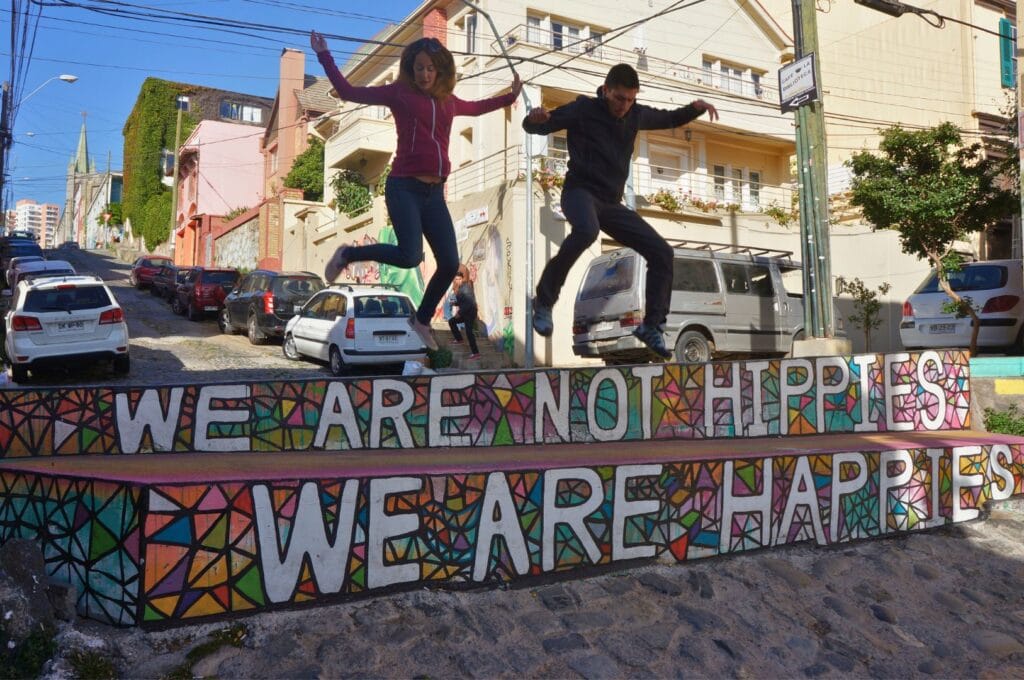
Unique bars and restaurants
We’ll gladly share some great spots below, but really, just wandering around will lead you to fantastic places, as the city is full of cafés, restaurants, and bars, each more original than the last. There are chic, alternative, artisanal breweries, terraces with incredible views, clubs, live music, exhibitions… In short, there’s plenty to keep you busy for several days in Valparaíso! Maybe that’s also why so many travelers end up staying longer.
How to get to Valparaíso
Like in most Latin American countries, buses are the most common and easiest form of transportation for both tourists and locals. No matter where you’re coming from, the easiest way is to head to the Chilean capital, Santiago, and then take a bus to Valparaíso.
From Santiago de Chile
Numerous buses depart daily from Santiago’s Alameda terminal to Valparaíso’s Rodoviario terminal. The semi-cama trip takes about two hours, and tickets start at 4,000 Chilean pesos. Only have one day to spend in Valparaíso? This guided tour will show you the city’s highlights in a day from Santiago.
From San Pedro de Atacama
From Atacama, head to Santiago by taking two buses: the first from San Pedro de Atacama to Calama (two hours, starting at 4,000 pesos), and the second from Calama to Santiago (about 30,000 pesos for a trip of at least 20 hours). For a quicker option, take the first bus to Calama and then a flight to Santiago.
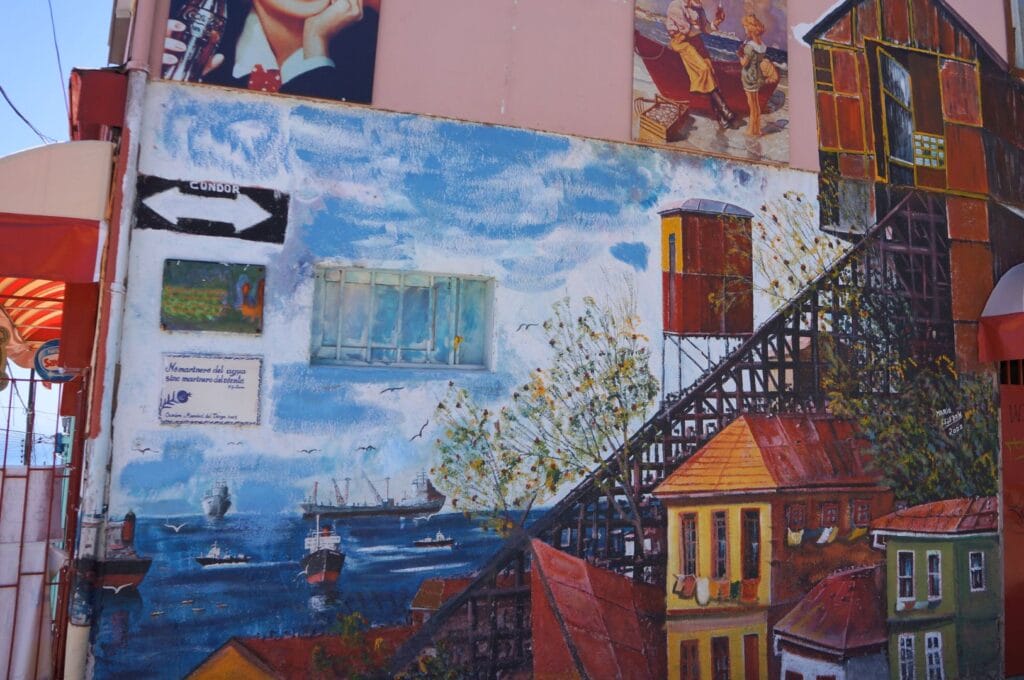
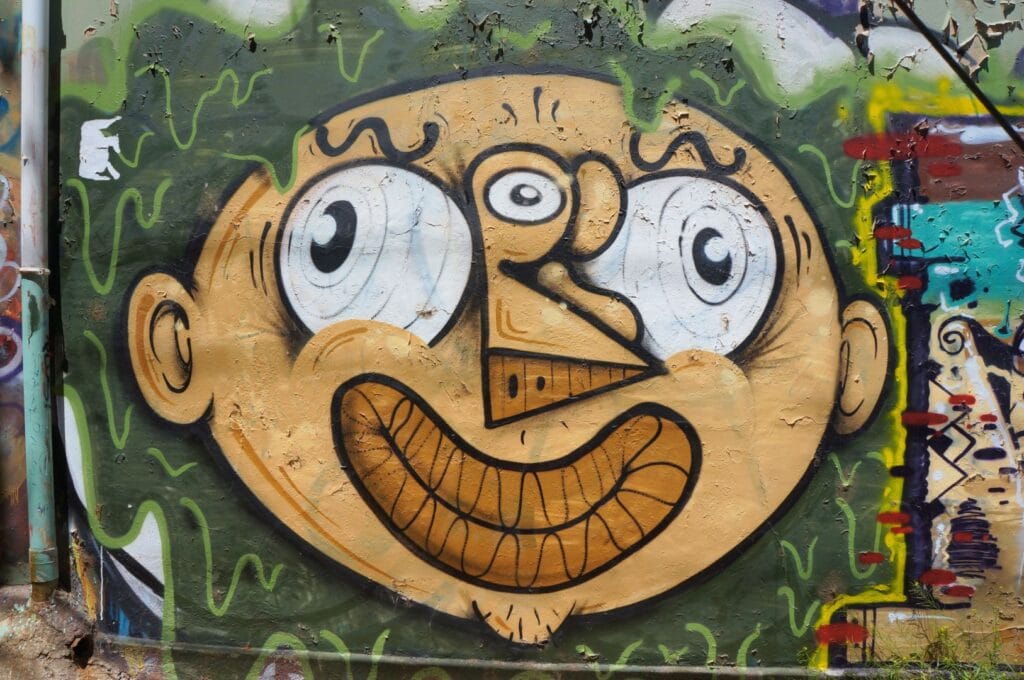
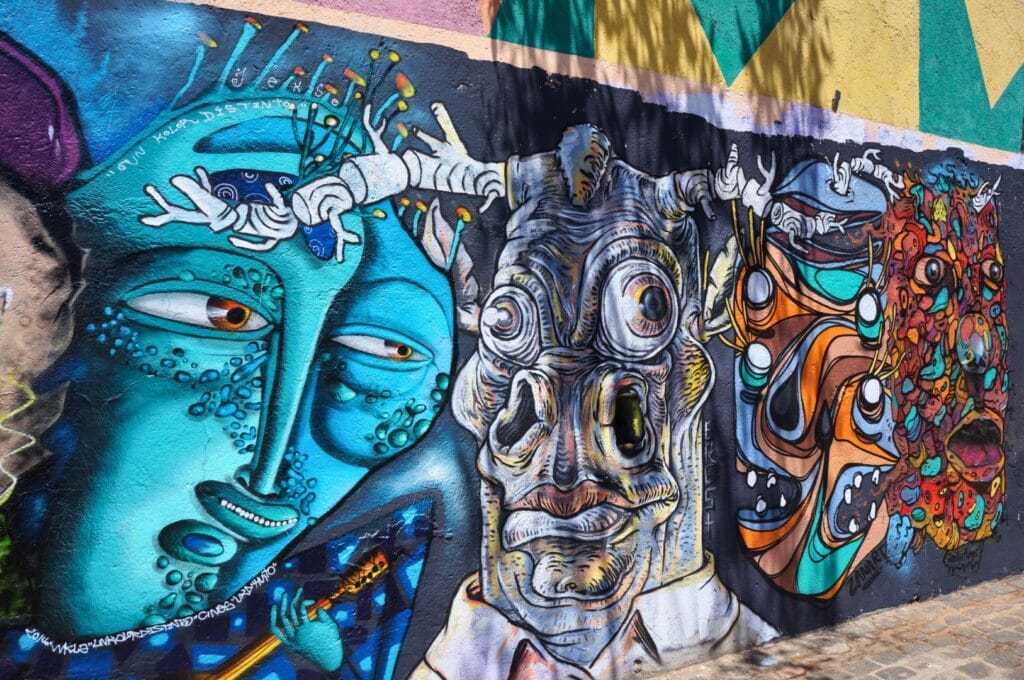
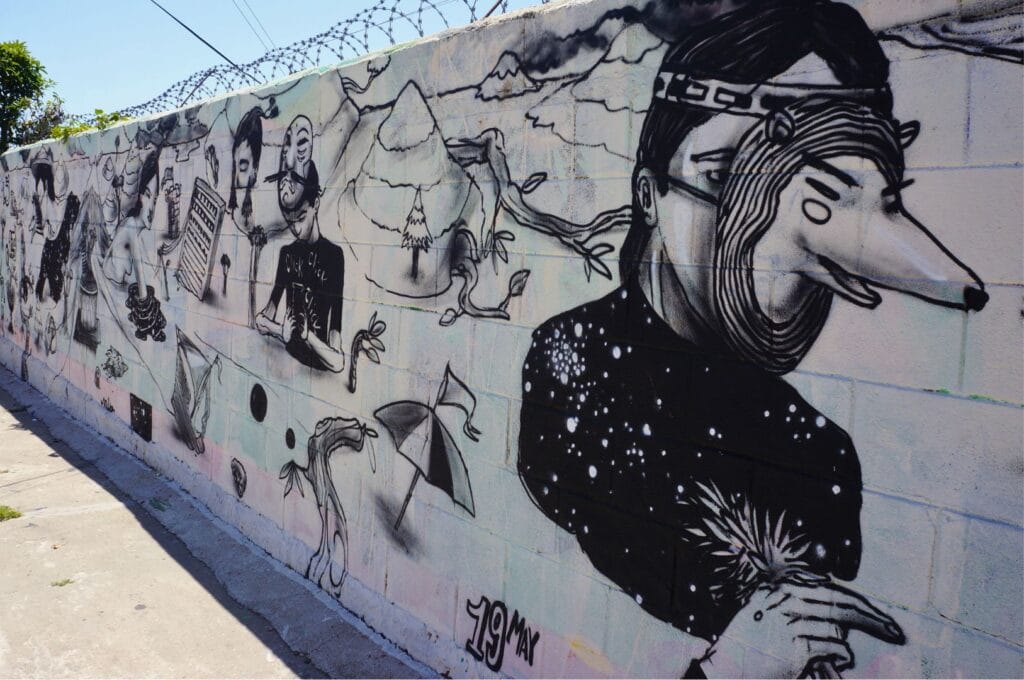
From Pucón
From Pucón, buses run day and night to Santiago. We prefer the night buses, especially since you can choose between semi-cama and cama seats! The trip takes just over 10 hours, and tickets start at 12,000 Chilean pesos.
From Mendoza, Argentina
Maybe you’re like us, crossing the border between Chile and Argentina frequently! After Salta, we stopped in Mendoza before heading back to Valparaíso, on Chilean soil. The journey through the Andes is simply stunning, and as a bonus, you’ll see the impressive Aconcagua, the highest peak in the mountain range (6,961 m). There are no night buses, but honestly, that’s not a bad thing—you’ll want to take in the views! Check prices and schedules here.
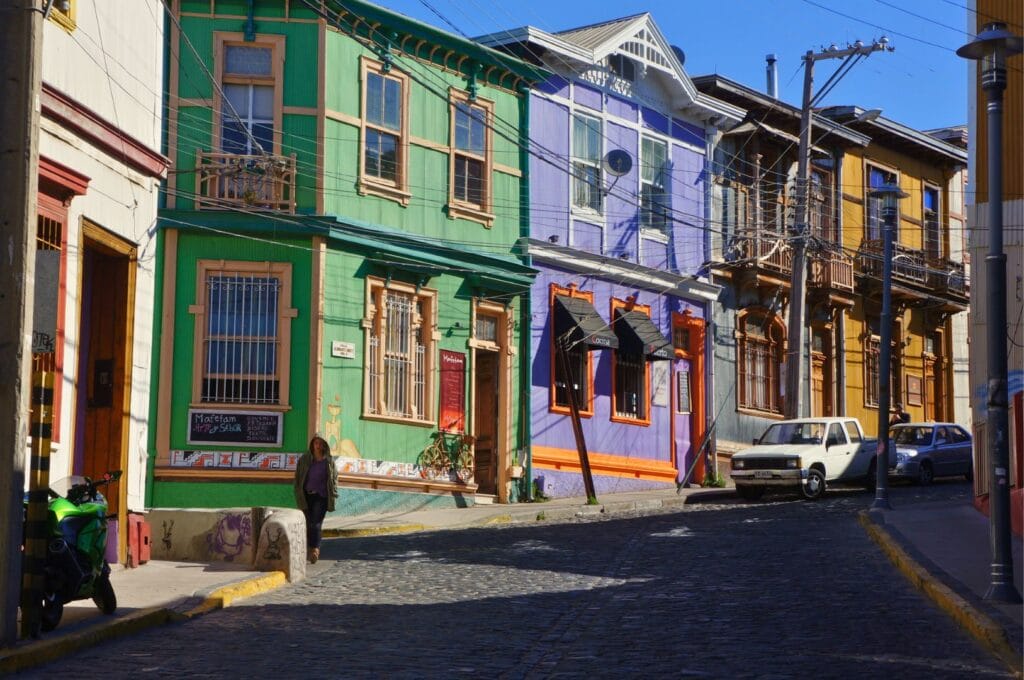
This article contains affiliate links to partner sites. When you use our links to book accommodation, a car, or an activity, you don’t pay anything extra, but we get a small commission. This helps us to offer you free, independent, and ad-free content. Thank you for your support!
Getting around the city
On foot, by elevator
In our opinion, the best way to tour the city is on foot! But don’t worry, there are other options.
If you’re tired after your 20th staircase and 7th hill, you can always take one of the many elevators/funiculars (both vertical and not) that will save you some energy when going between the lower and upper parts of Valparaíso. In the city center, there’s usually one per hill. They have plenty of charm, as most have been restored while maintaining their vintage style. And at just 100 pesos per ride, why not take advantage of them? 😉
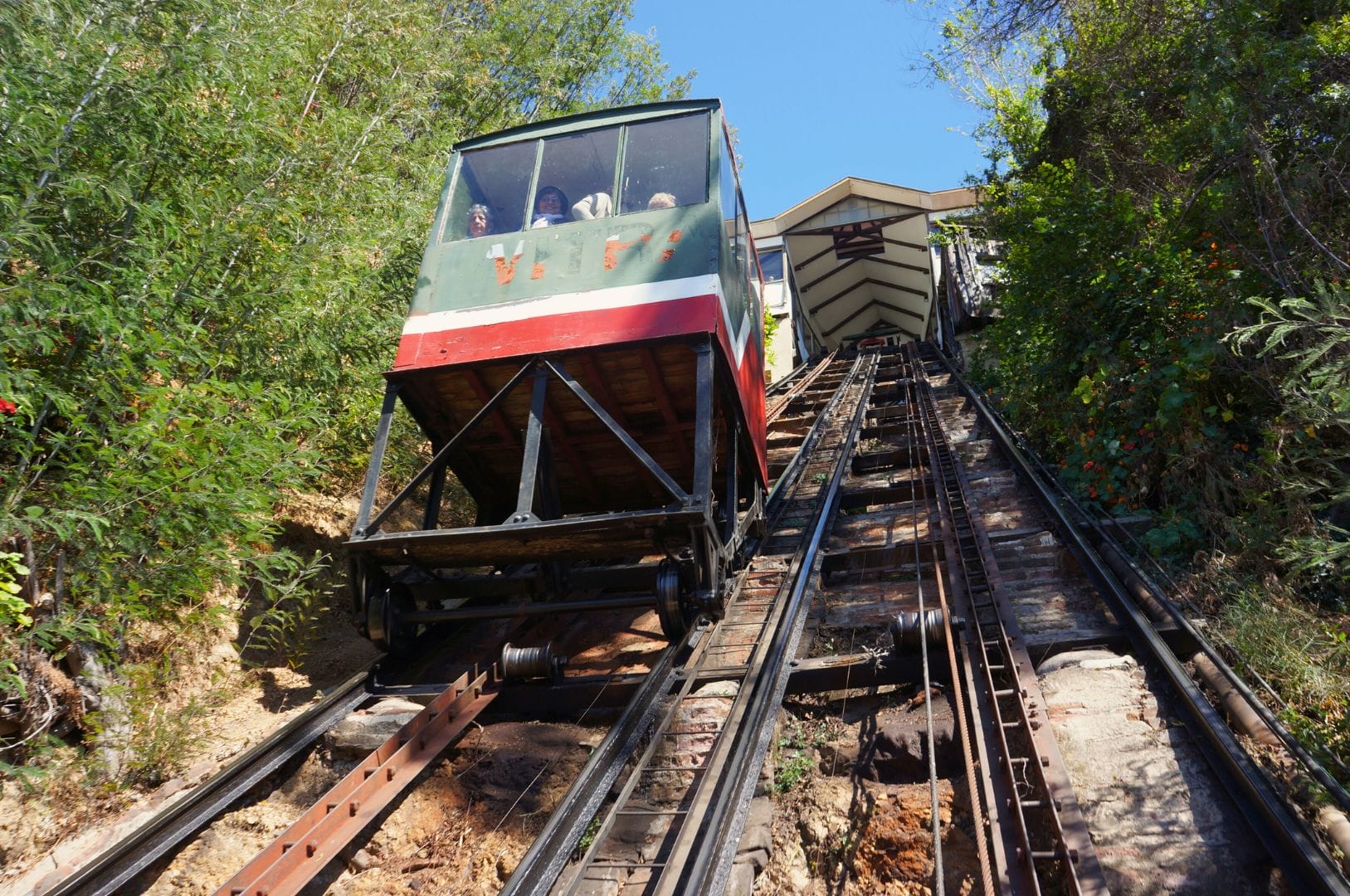
By bus or trolley
You can also get around by bus or trolley! Valparaíso has preserved these old-fashioned modes of transportation, and you’ll pay 300-400 pesos depending on your destination. From the Rodoviario terminal, take a bus or trolley to the city center. It’s cheaper than a taxi and a much more unique experience :).
For buses, don’t miss taking the Micro O (612), a small bus with an “O” sign that connects to the upper part of the city! We’ll talk more about it later in the article.
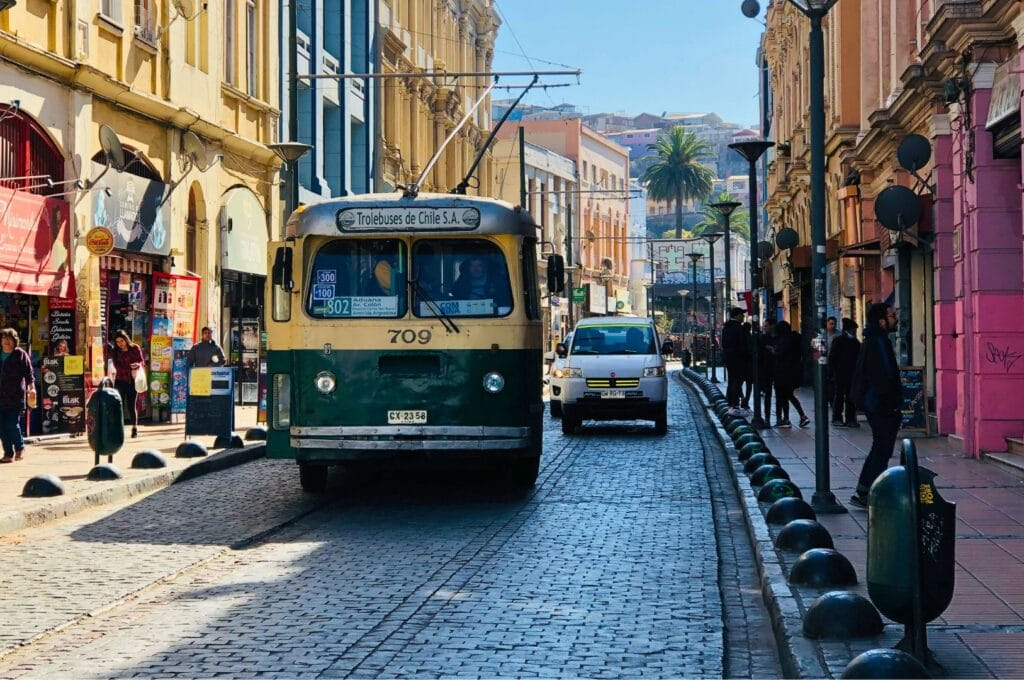
Oh, and as a little anecdote, the Valparaíso trolleys have an origin that touched us… Yes, they’re SWISS, hihi! How can you tell? Well, the buttons for requesting stops are in French AND German. What’s more, the stickers on the back of the buses are the same as those still on the backs of Lausanne buses today!
By metro
Since 2005, a metro has connected Valparaíso, Viña del Mar, and small inland villages up to Limache. All stations in Valpo are part of Zone 1, and Viña’s stations are in Zone 2. Zone 1 includes five stops: Puerto (the port), Bellavista, Francia, Barón, and Portales. As it follows the coast to Viña del Mar, we recommend taking it if you want to leave the city. Otherwise, your feet and the bus are the best ways to explore Valpo!
For your information, a day pass for unlimited transport has been introduced. For 5,500 pesos, you can make as many trips as you like in one day on the metro line, from Valpo to Limache.
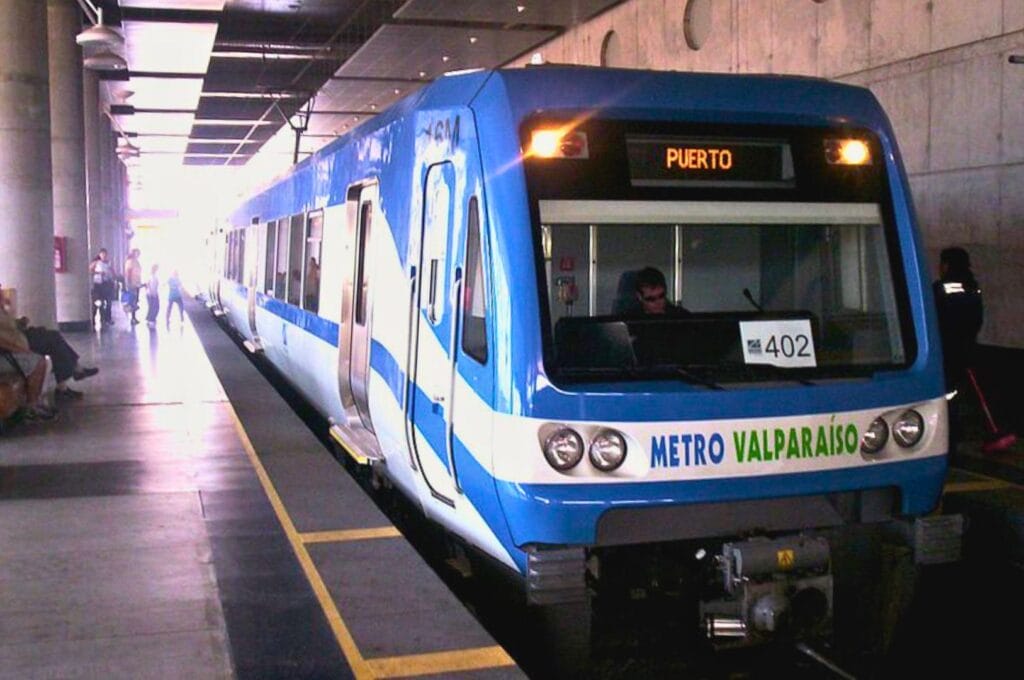
How safe is Valparaíso?
Some areas of Valpo indeed have a reputation for being sketchy. You may have heard or read that theft and muggings are common. However, we didn’t encounter any issues during our five days in Valparaíso. To stay safe, we followed basic safety rules, the same ones we applied in Quito and the rest of South America in general. When you’re out and about, take only the essentials with you and leave your valuables at the hotel. Also, avoid going out after dark.
What to see and do in Valparaíso?
As you’ve probably guessed, walking around Valparaíso is the best way to discover gems at every corner. In five days, we managed to visit quite a few places. Our favorite area? Without a doubt, the entire historic center, which has been a UNESCO World Heritage Site since 2003!
It was actually a group of residents who loved their city that gathered and contacted UNESCO to protect the city center from modernization. Among other things, the beautiful cerros Alegre and Concepción, Plaza Sotomayor, Bellavista Hill and its Museo a Cielo Abierto, and the funiculars are all protected, and rightly so!
Here’s our detailed list of Valpo’s must-sees to plan your itinerary!
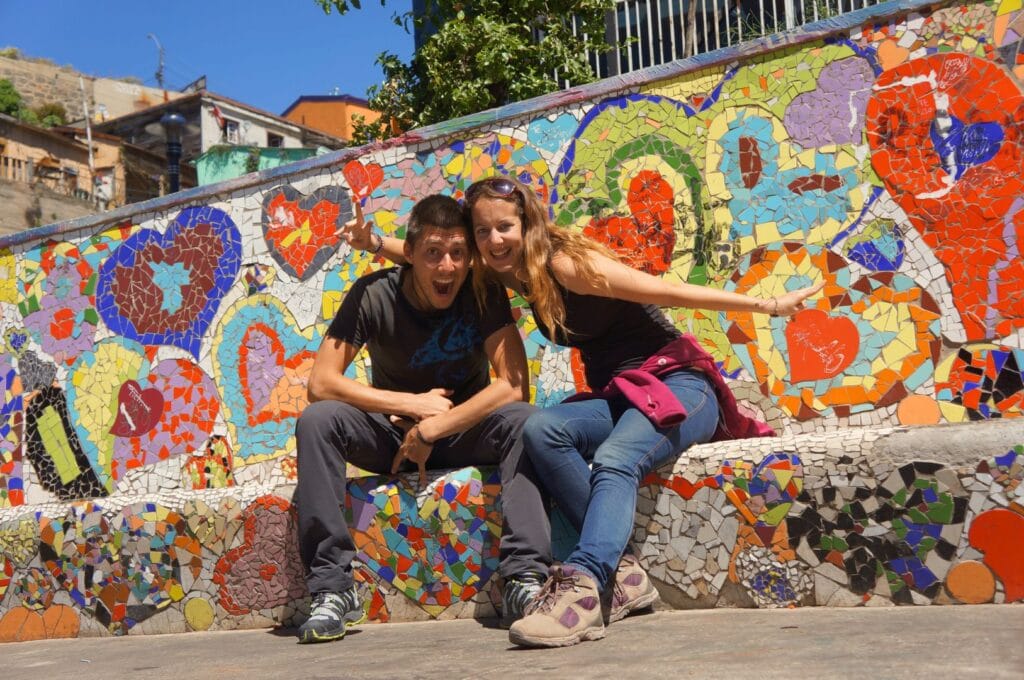
A free walking tour of Valparaíso
We highly recommend starting your visit to Valparaíso with a free guided tour. The concept is simple: you explore the city with a group for 2-3 hours with a guide. At the end, you pay whatever amount you think is fair, and only if you’re satisfied. We use this system whenever we arrive in a new city, and every tour has been fantastic.
In Valparaíso, there are several types of tours: the classic free tour with the city’s highlights and one walking tour focused on walks and elevators (in English or Spanish). The guides are passionate about their city and will give you plenty of tips and advice on what to do and see during your stay in Valparaíso. Thanks to the tour, we got a great overview of the city and plenty of ideas for our five days here. Perfect!
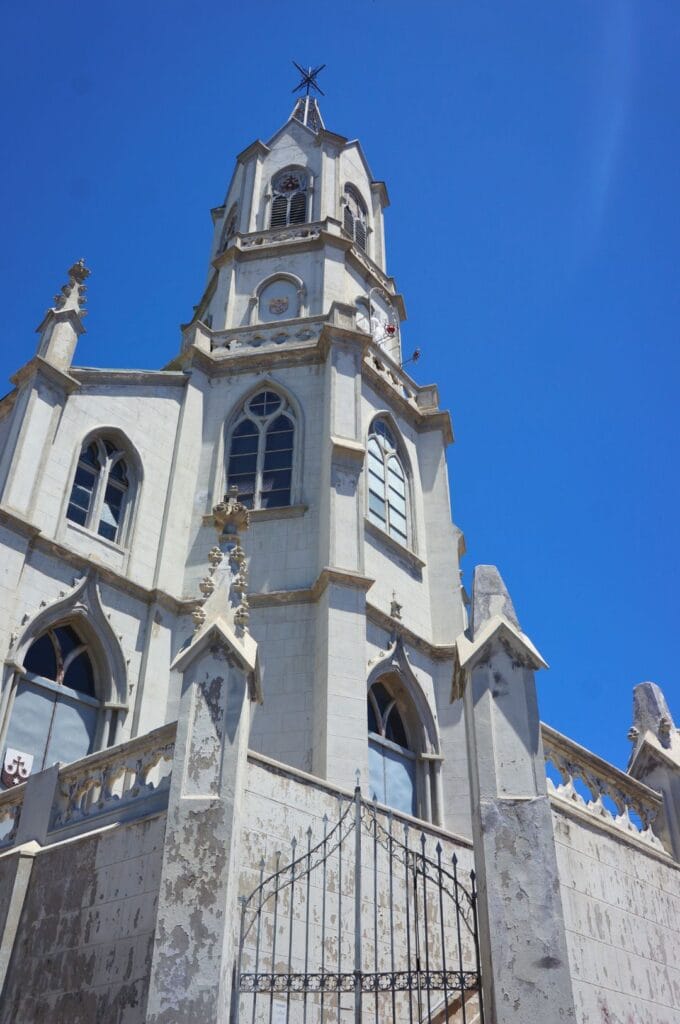
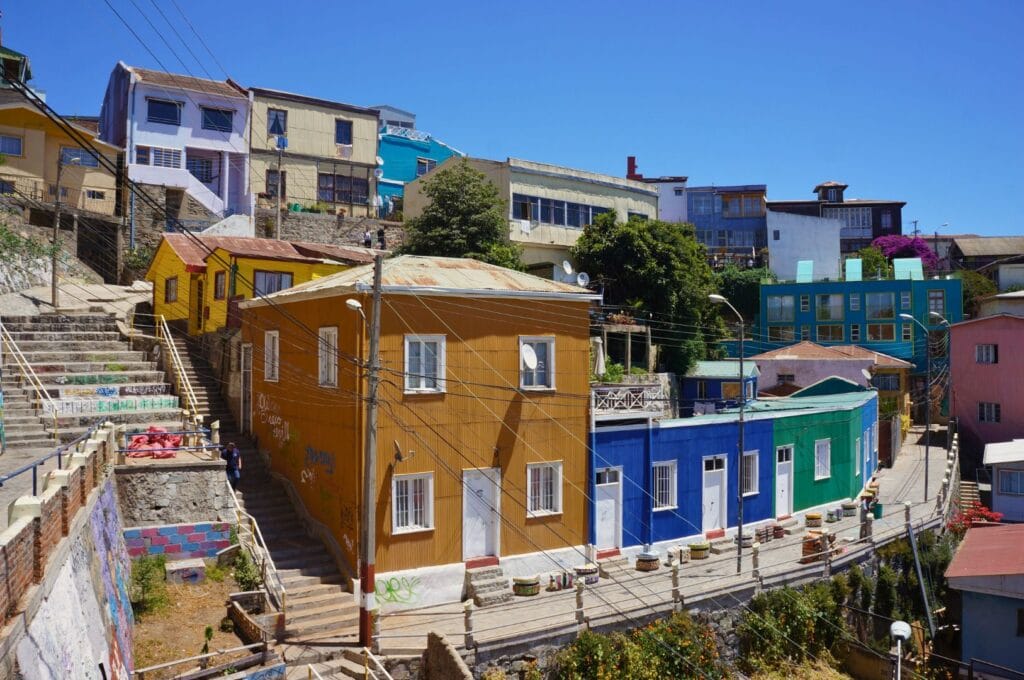
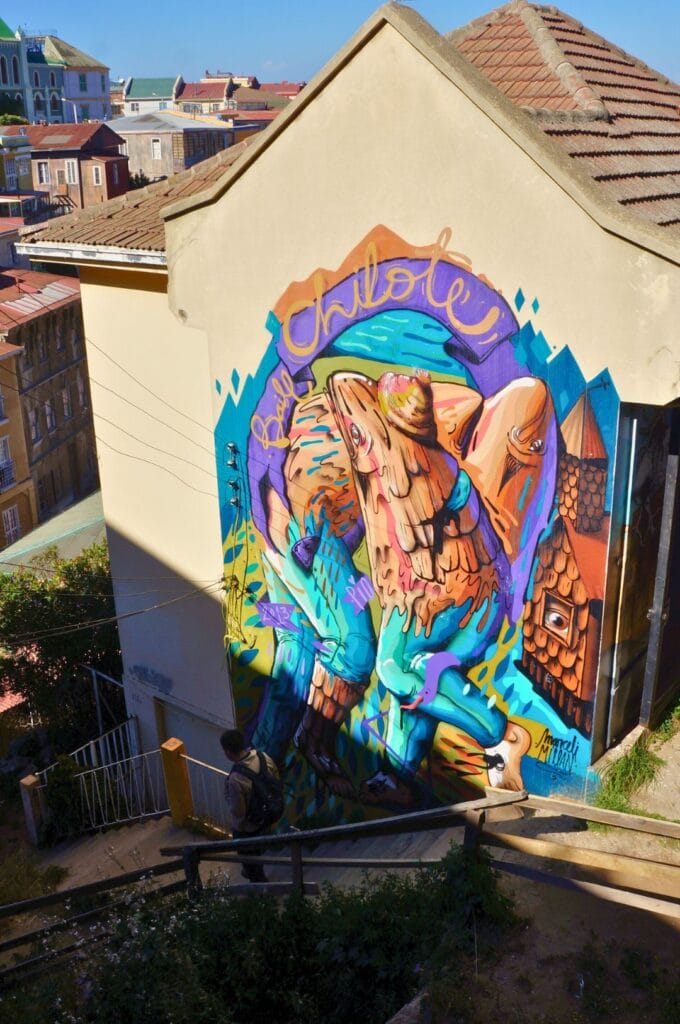
Cerros Alegre and Concepción
We fell in love with Cerro Alegre and Cerro Concepción, which truly represent the essence of Valparaíso. A labyrinth of charming little streets, colorful houses, murals at every corner, funiculars, and an impressive selection of bars, restaurants, and hotels.
To get there, take the Concepción elevator or go up Urriola Street and climb the colorful stairs of Fischer Passage. Turn left onto the fascinating Gálvez Passage. Then pass by Paseo Gervasoni, continue towards Paseo Atkinson (a must-see promenade), and head to Beethoven Street and its piano staircase. Climb it to reach Valparaíso’s most famous church, the Lutheran Church of Santa Cruz. Then, head towards Cerro Alegre at the end of Templeman Street, where street art is everywhere. Finally, take Paseo Dimalow to the Reina Victoria elevator, one of the city’s oldest (1902!). The fare is 100 pesos per person. If you’re fascinated by passages and funiculars, this guided tour is perfect for you!
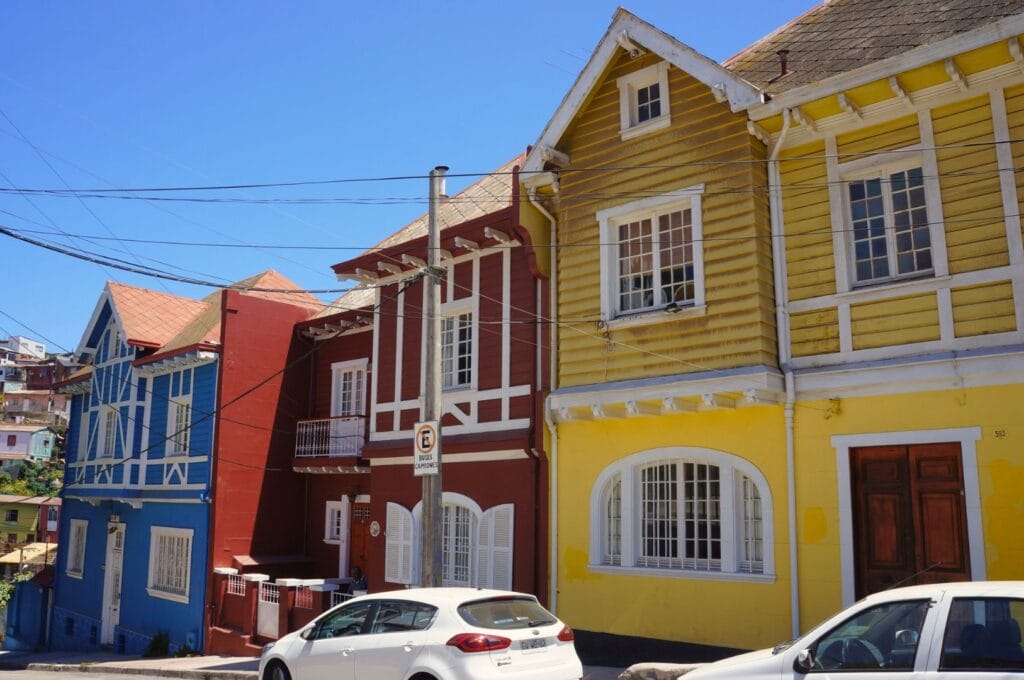
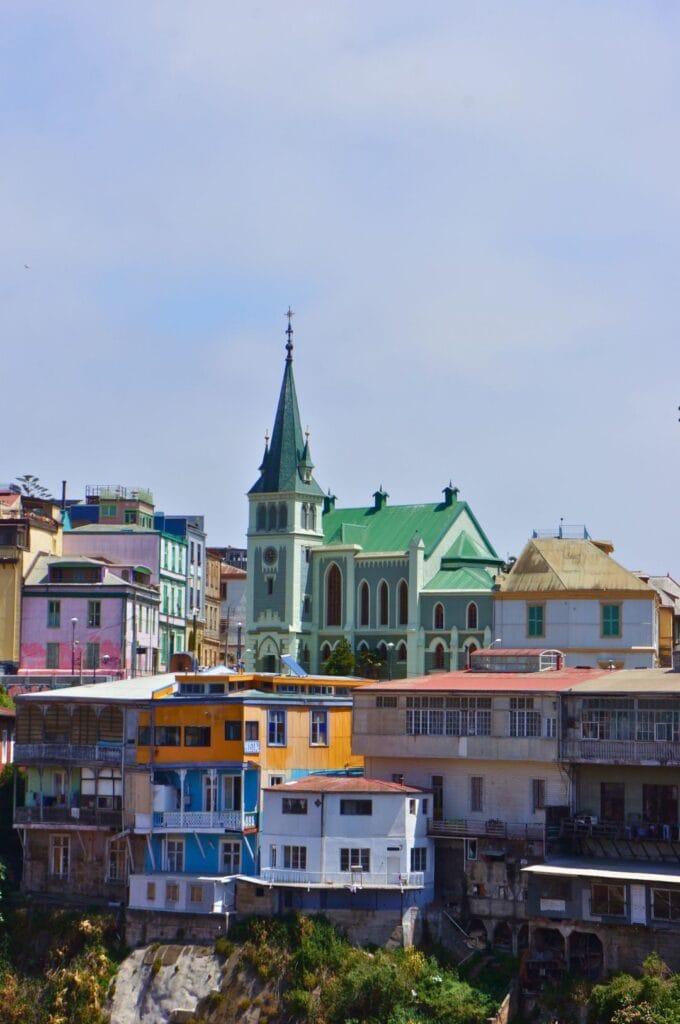
Are you more into “classic” art? Then head back to the end of Fischer Passage and take the steps across from the colorful staircase. You’ll arrive at Paseo Yugoslavo, lined by the Palacio Baburizza, an architectural building constructed in the early 20th century with Art Nouveau and Art Deco influences. Today, this palace houses the Valparaíso Fine Arts Museum. Admission costs 2,000 pesos per adult, and it’s open daily from 10 a.m. to 6 p.m.
As you can see, if you only have 1 or 2 days in Valparaíso, we recommend at least strolling through the Cerros Alegre and Concepción!
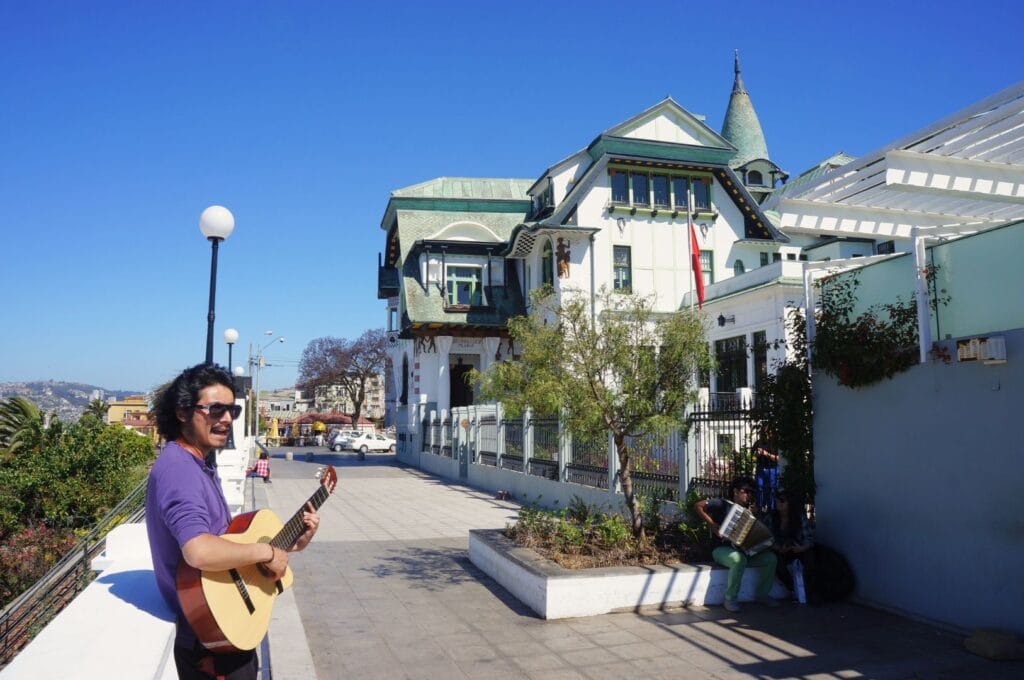
Cerro Artilleria and Playa Ancha
From the port, head up to Cerro Artilleria for a breathtaking view of Valpo from Paseo 21 de Mayo. If you have time, pay a quick visit to the National Maritime Museum, which traces the history of the Chilean navy and maritime activities. The museum is open daily from 10 a.m. to 6 p.m., and tickets cost 4,000 pesos per person.
Just beyond, stroll the streets of Cerro Playa Ancha. Here, colorful houses have given way to magnificent Victorian-style buildings and period mansions. This Cerro is far from being the most touristy, yet the gentle pace of life is palpable. We’ve stepped back in time to rediscover the Valparaíso of yesteryear. Stroll along Playa Ancha Avenue to Las Torpederas beach, then back along Gran Bretaña Avenue, lined with pretty mansions dating from the early 20th century. Some even compare this street to San Francisco! Cross Pasaje Harrington, named in tribute to Esteban Harrington (whose house is in this alley), a Chilean architect of note in Valpo’s history. It’s to him that we owe the Victorian style you’ll discover throughout your visit.
Cerro Bellavista
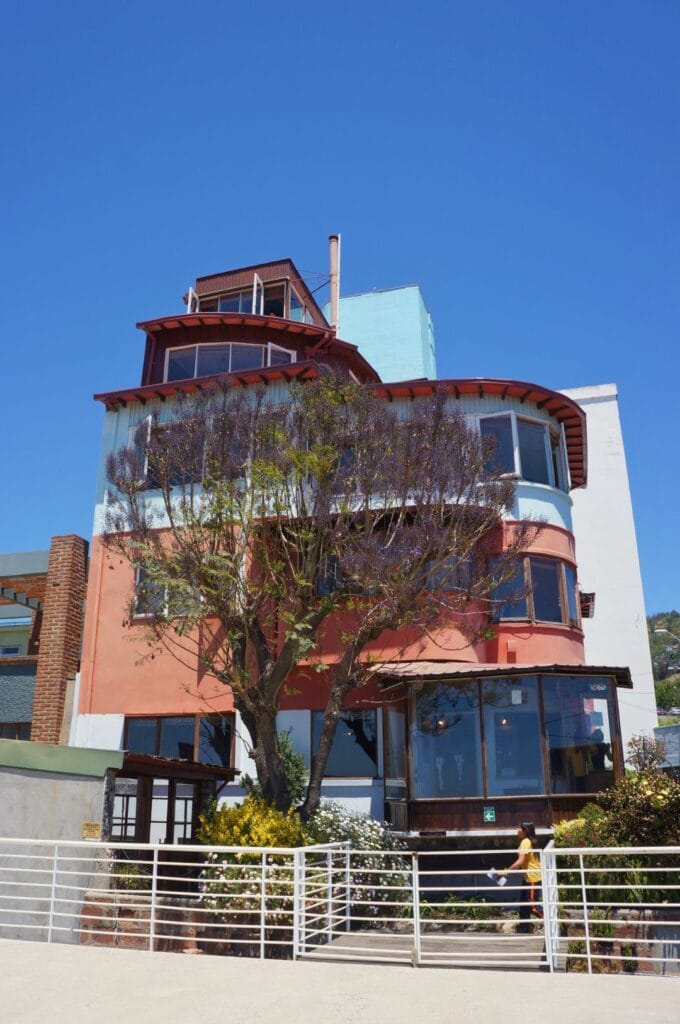
Slightly less touristy than Cerros Alegre and Concepción, Cerro Bellavista is an artistic hub with its Museo a Cielo Abierto (open-air Museum) and La Sebastiana house. The Open-Air Museum is a free outdoor tour featuring 20 artworks by Chilean artists scattered along the streets. (Spoiler alert: here’s a preview and map of the locations.) The charming La Sebastiana house was once the residence of Chilean poet Pablo Neruda. It has been transformed into an original museum showcasing the life and works of this emblematic figure in Chilean culture. La Sebastiana is open from Tuesday to Sunday, 10 a.m. to 6 p.m. Admission costs 9,500 pesos, with an included audio guide.
The view from Avenida Alemania
Looking for an incredible view? We recommend climbing up to Avenida Alemania! This street is unique in that it runs along the upper part of the city without too many ups and downs, offering a splendid panoramic view of the entire Valparaíso Bay. We highly recommend walking along this street to fully appreciate the view. To get there, you can take the O bus (612) from Avenida Argentina, which runs along the avenue and the upper part of the city, or you can walk—it’s up to you.
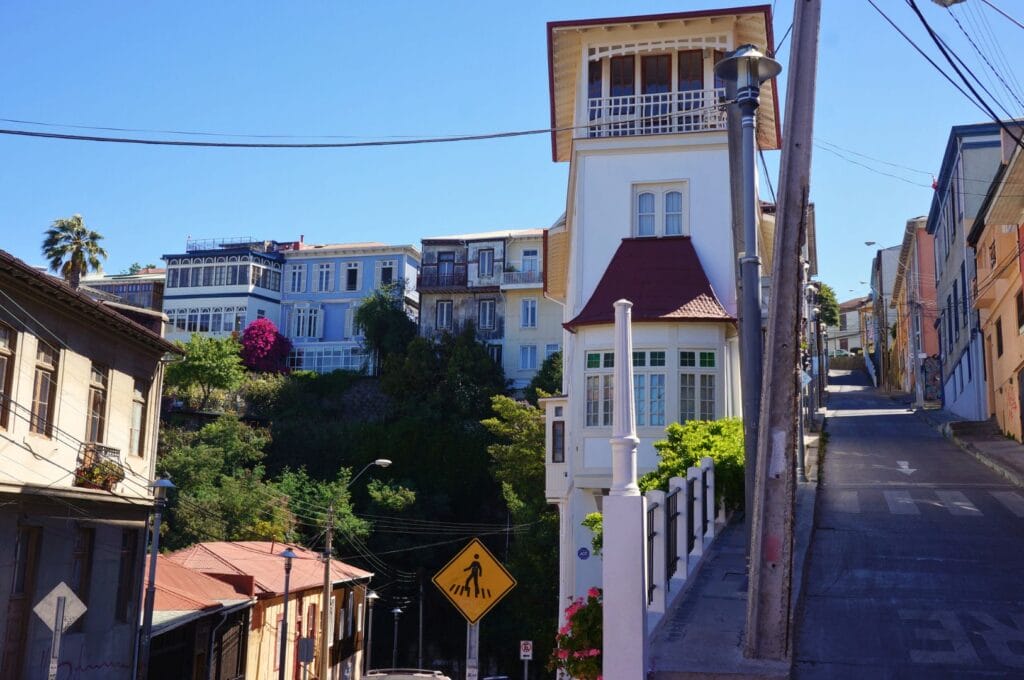
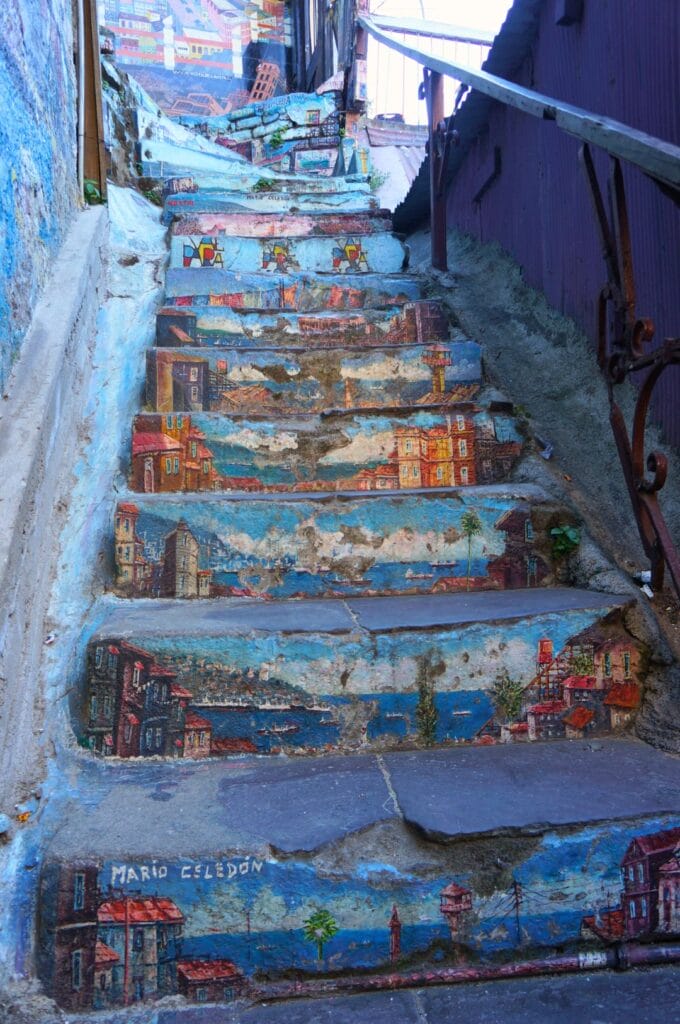
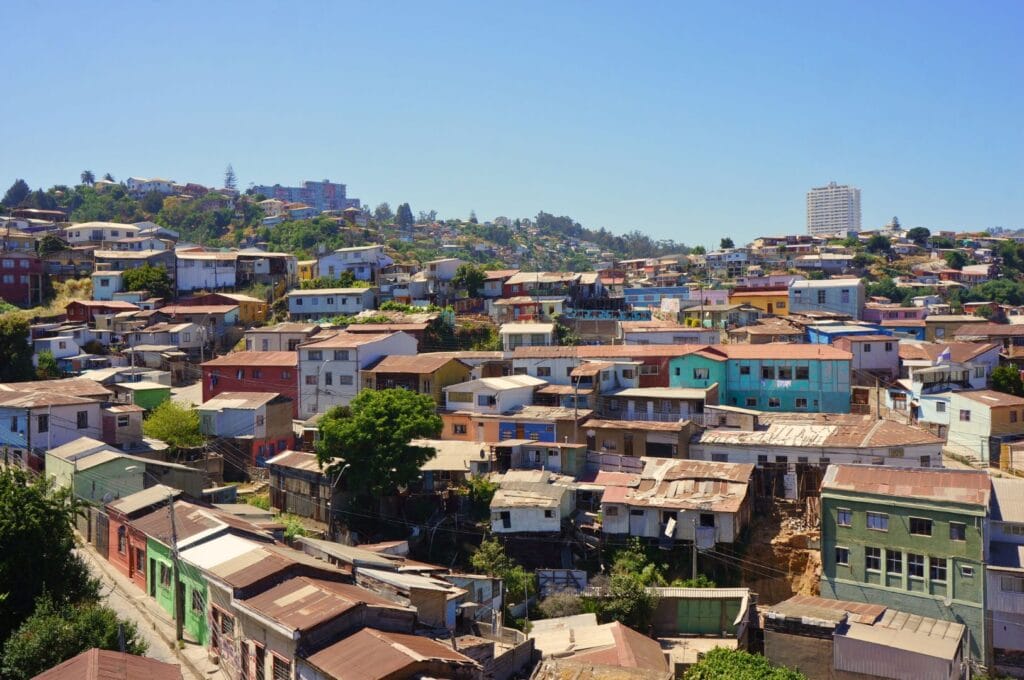
The Natural History Museum of Valparaíso
This may not be a typical tourist stop, but we couldn’t miss it. The Natural History Museum of Valparaíso has the advantage of being free and offers fun exhibitions that appeal to everyone, both young and old. We definitely recommend it if you want to learn more about Chilean wildlife! The museum is located next to Victoria Square and is open from Tuesday to Friday, 10 a.m. to 5:30 p.m., and Saturday from 11 a.m. to 4 p.m.
Pelicans and sea lions
After your cultural visit, head to Valpo’s harbor (Muelle Prat) to watch pelicans fishing among the maze of boats. Then, follow the coast to Mirador Iobos, near Muelle Barón. From there, you can admire the sea lions that love to jump and lounge on a section of the pier.

A themed guided tour
Valparaíso is one of those cities where guided tours abound! Honestly, there are excursions for all tastes and budgets! Here, we present the ones we would have loved to do during our stay in Valpo. As backpackers on a budget, we had to make some choices ;).
Street art
You’ll see street art on every corner. Wander through both popular and less touristy neighborhoods to discover these urban masterpieces! In our opinion, getting lost in the maze of streets is one of the best ways to explore Valparaíso. To learn more about the iconic and hidden murals of Valpo, book your guided tour, or even a graffiti session on one of the city’s walls!
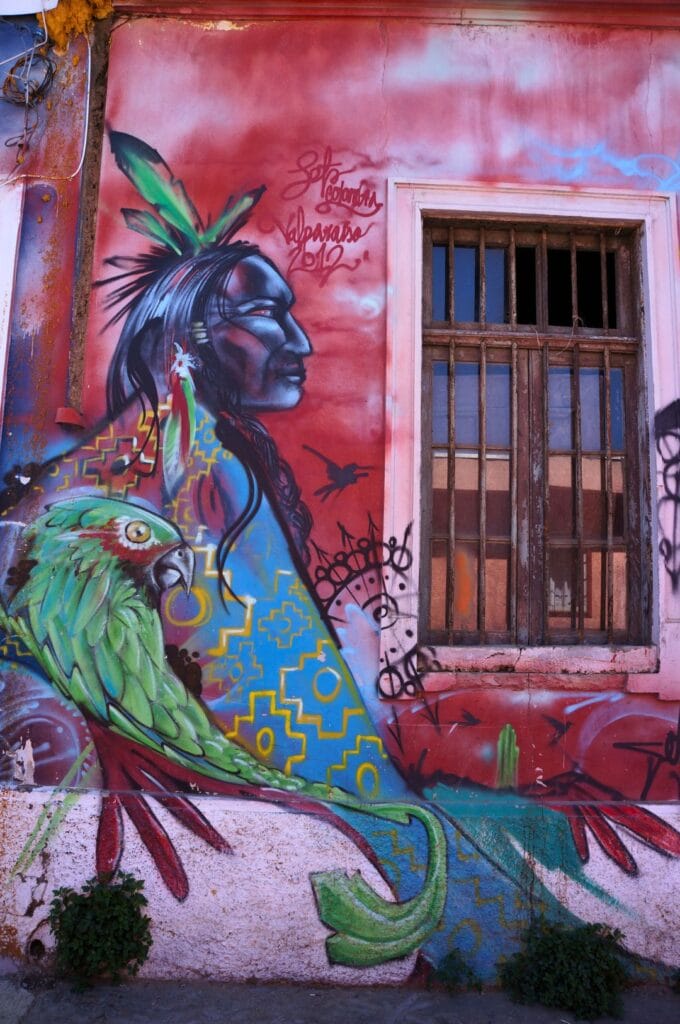
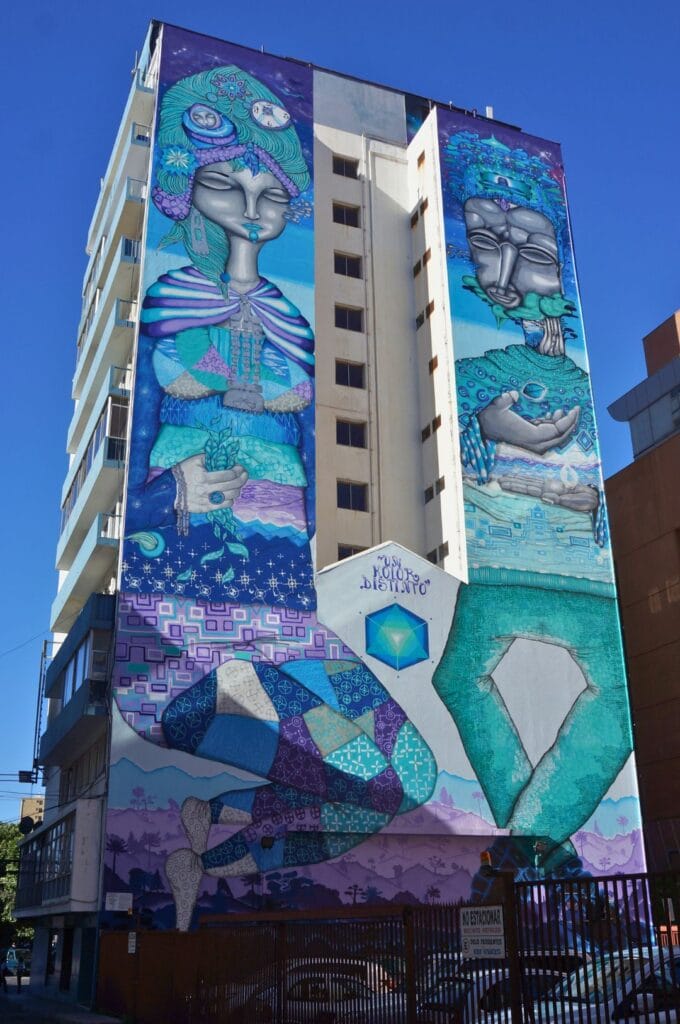
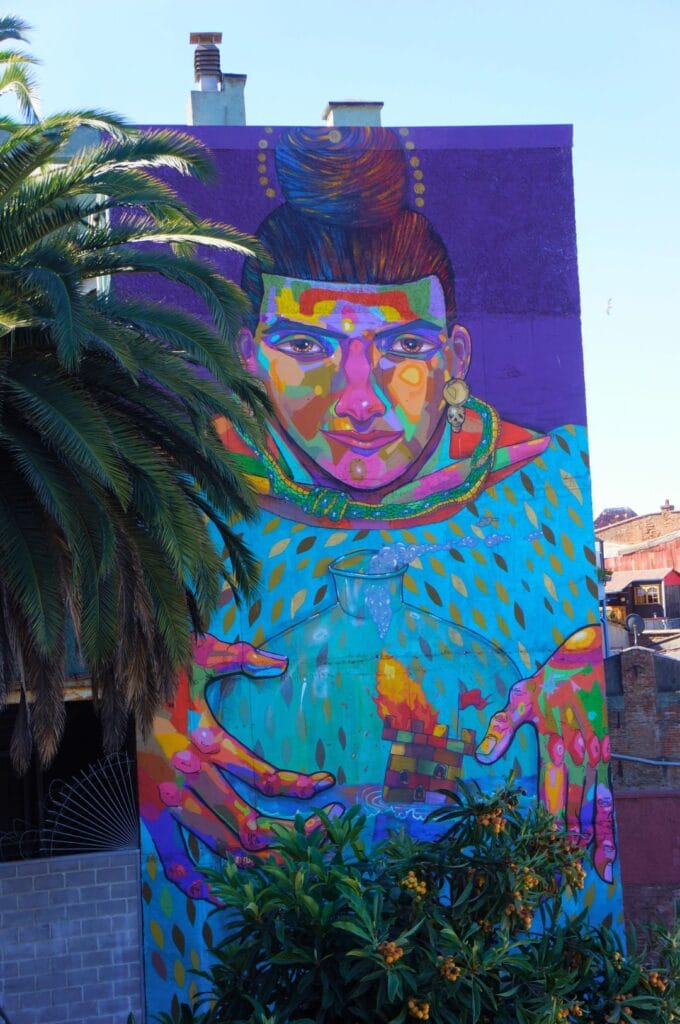
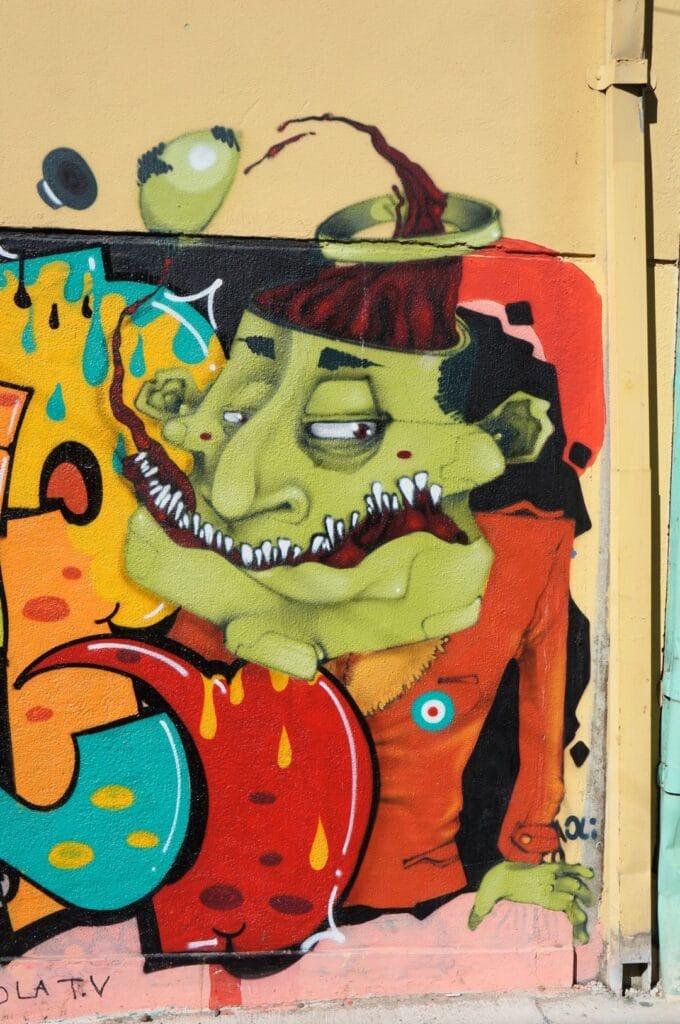
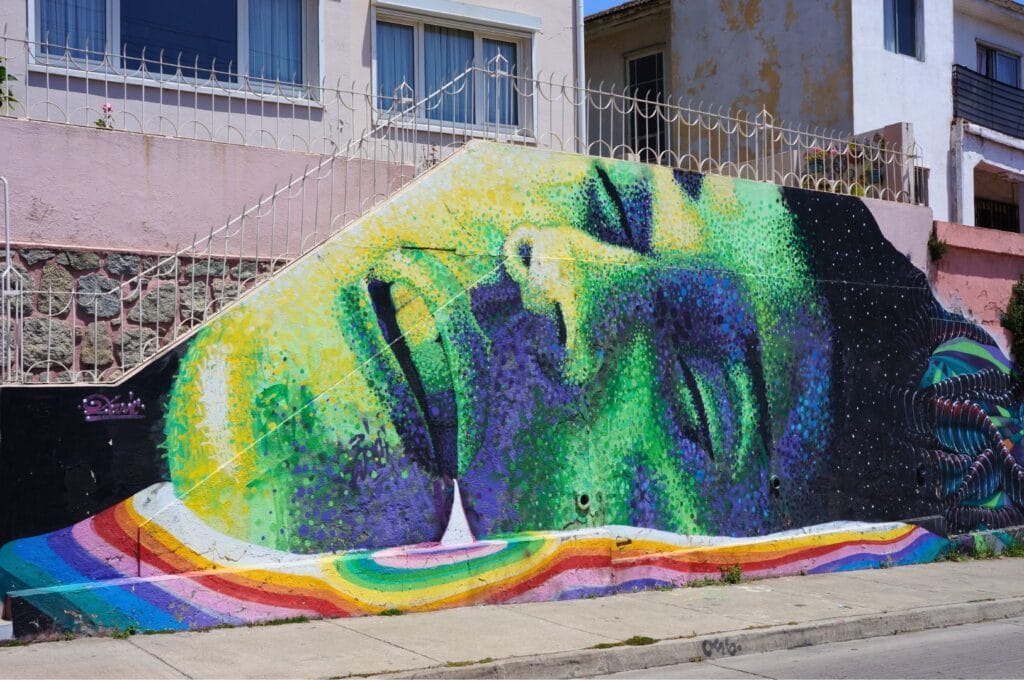
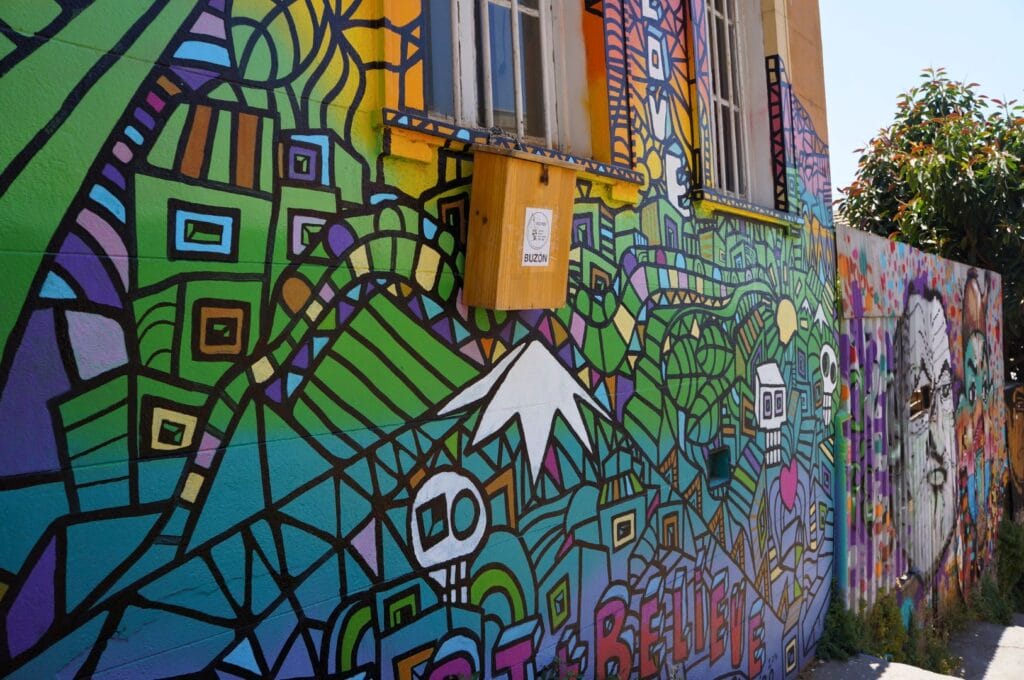
Food
Be sure to stop by Valparaíso’s historic market, Mercado El Cardonal, for a feast for the senses. The restaurant La Paloma is an institution there! For a more in-depth experience, opt for a food tour of the best spots in town or a top-notch Chilean cooking class.
Nautical
To get another view of Valparaíso’s port and bay, boat tours are available from Muelle Prat, the port area opposite Plaza Sotomayor. The prices are very reasonable, and you’ll learn more about Chile’s main port!

Other things to do around Valparaíso
Take a trip to Viña del Mar
You’ll hear about Viña del Mar, the seaside resort right next to Valparaíso. Honestly, it’s nothing special: a casino, houses quite different from those in Valpo… But it’s a great spot to enjoy the Pacific waters on the many beaches along the coast, like El Sol and Las Salinas. Don’t miss the Wulff Castle on the waterfront just before the casino—it’s probably the most charming building in the city! And if you’re into archaeology, a visit to the Francisco Fonk Museum of History and Archaeology will be just the thing for you.
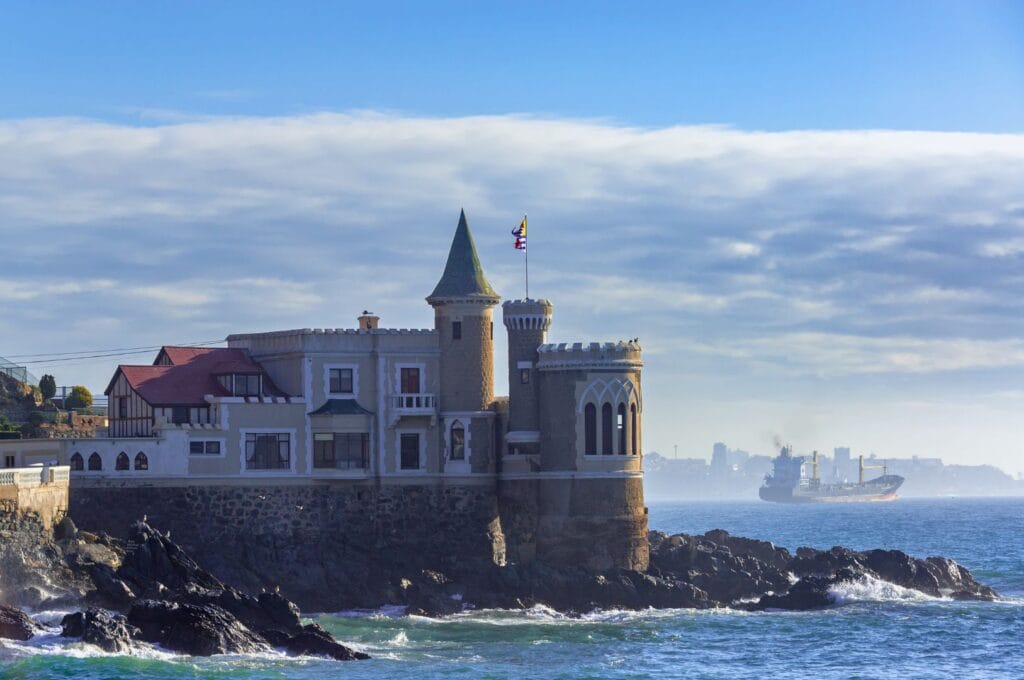
As a final point of interest, we recommend the city’s botanical garden. Far from the bustle of the seafront, it’s a true visual and olfactory treat! The garden is open daily from 9 a.m. to 5 p.m., and admission costs 3,000 pesos per person. To get there, take bus line 203 from Avenida Argentina.
Lastly, we highly recommend the Casa Cervecera Altamira Reñaca brewery. Unfortunately, the one in Valpo has closed, but the Viña del Mar location is still open. To cut to the chase: their craft beer is delicious (it’s won numerous awards), and we also had the best burgers of our trip there. Okay, we didn’t eat many burgers, but still!
To get to Viña del Mar, you have a few options:
- on foot: From Valparaíso’s port to the Viña del Mar casino, it’s about a 2-hour walk. It’s a bit of a trek, but you can always take a bus for the trip back.
- by metro: The metro is super convenient and will take you from Puerto station to Miramar station in Viña del Mar, close to the ocean, in just 10 minutes.
- by bus: Buses 215, 602, and 605 shuttle between the two cities.
Take a trip to Concón
Concón is more intimate than Viña del Mar, and the beaches there are slightly less crowded. The town is also famous for its stunning dunes, which you can see from Valparaíso! Buses 602 and 605 take a little over an hour to get there. For a bit more adrenaline, try sandboarding down the slopes!
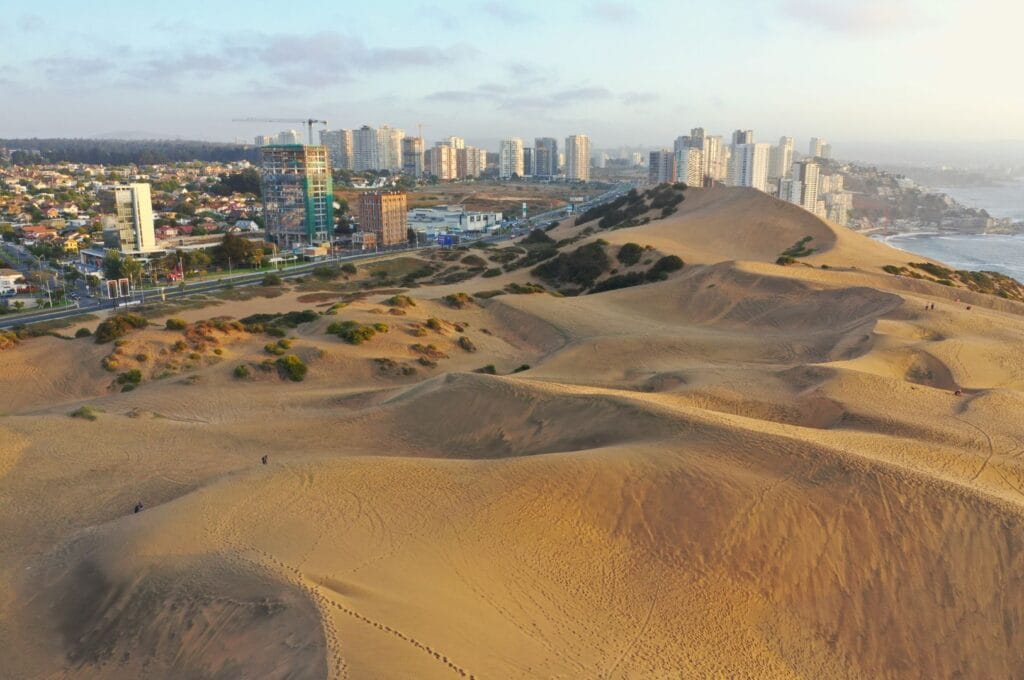
Discover Chilean wines in Casablanca
Red and white wine lovers shouldn’t miss the Casablanca Valley! This isn’t about Morocco; we’re talking about the vineyards located between Santiago and Valparaíso. Renowned for its Chardonnay, Pinot Noir, and Merlot, this wine region also boasts lesser-known varietals like Carmenère and Carignan. The wine route awaits you from either Santiago or Valparaíso!
Hike in La Campana National Park
Lesser known, La Campana National Park is part of a biosphere reserve. It features beautiful hiking trails among Chilean palm trees, a protected species! The peaks are not as high as those in the Andes, but you’ll enjoy stunning views of them from various hills. Olmué is the town that grants access to the park.
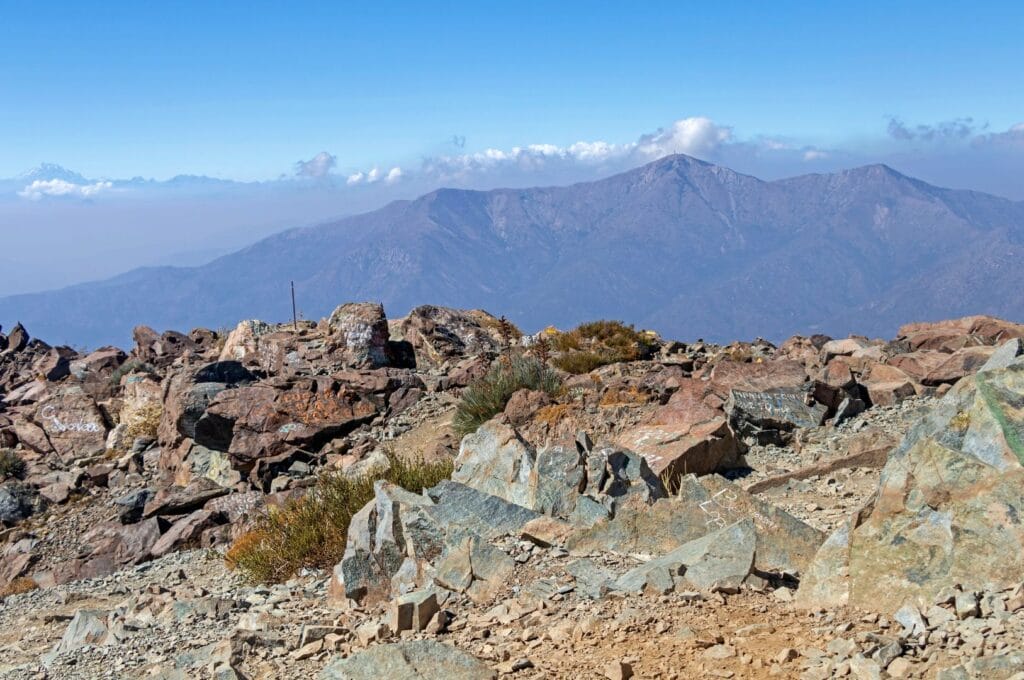
Where to stay in Valparaíso?
We stayed for five days at Hostal Casa Verde Limón, a great hostel located at the top of Cumming Street. This lovely green house is beautifully decorated and super clean, with spacious double rooms for 29,000 pesos. The price for a bed in a dormitory is 10,000 Chilean pesos. Honestly, we couldn’t complain; we felt right at home! Oh, and a fun detail: you can do trapeze in the middle of the living room! For availability, check here.
As recommendations, we also suggest La Casa Piola and La Galería B&B for their attractive prices, cozy rooms, terrace, and excellent breakfast! For even more comfort, we recommend New Voga Guesthouse, a charming guesthouse very well-located with an incredible view of Valpo and the Pacific Ocean!
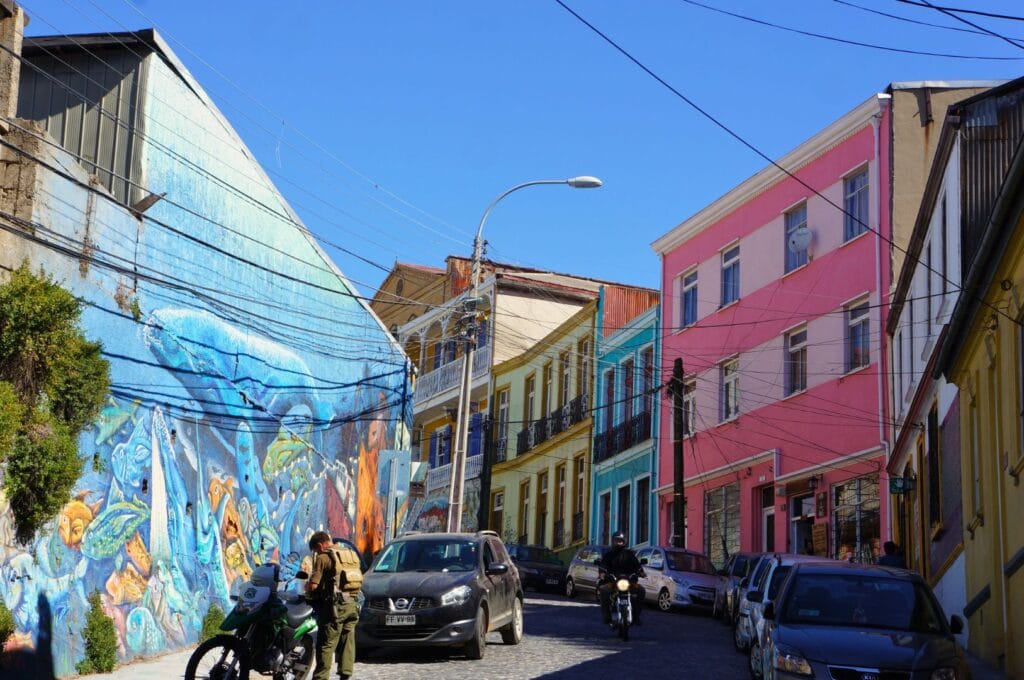
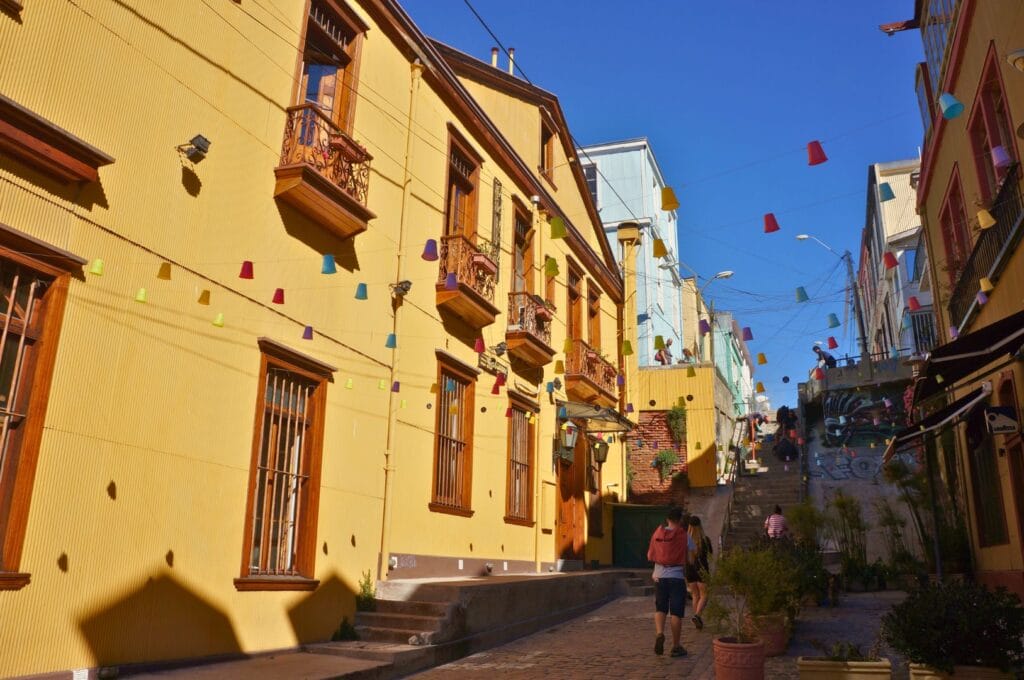
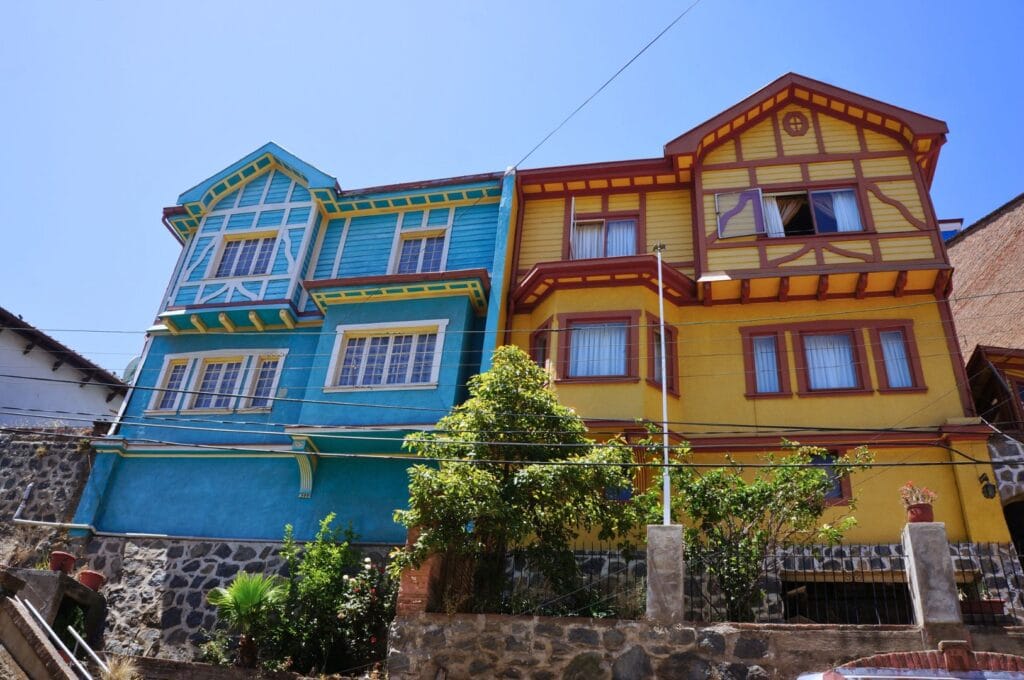
Where to eat and drink in Valparaíso?
To wrap up, we’d like to share some great spots we tried. But as we mentioned, Valpo has plenty of options, and you’d need much more than five days to claim you’ve tried the best bars and restaurants in the city. Get lost in the narrow streets and alleys; you’re bound to stumble upon hidden gems!
- La Casa Verde: A cute little restaurant serving delicious Chilean dishes, all with a lovely view of the city. What more could you ask for?
- Le Petit Café: This establishment on Fischer Passage will remind you of French breakfasts mixed with Chilean cuisine. The menu is simple but flavorful.
- Empanadas Famosas: The place may lack charm, but that’s not a big deal. People come here mainly to taste the best empanadas in Valparaíso. Tip: get them to go and enjoy them in an alley for a nice setting!
Review of our 5-day visit
Like many other travelers, we were completely enchanted by Valparaíso, an atypical city full of positive energy and discoveries. Honestly, even though we enjoyed Sucre in Bolivia and Quito in Ecuador, this is the first time a city has had such an effect on us in South America! So, make sure to visit, friends! Are you tempted by Valpo? What did you like most?
Our journey in Chile continues towards the gates of Patagonia: next stop, Pucón! Will you continue this adventure with us?
Pin it
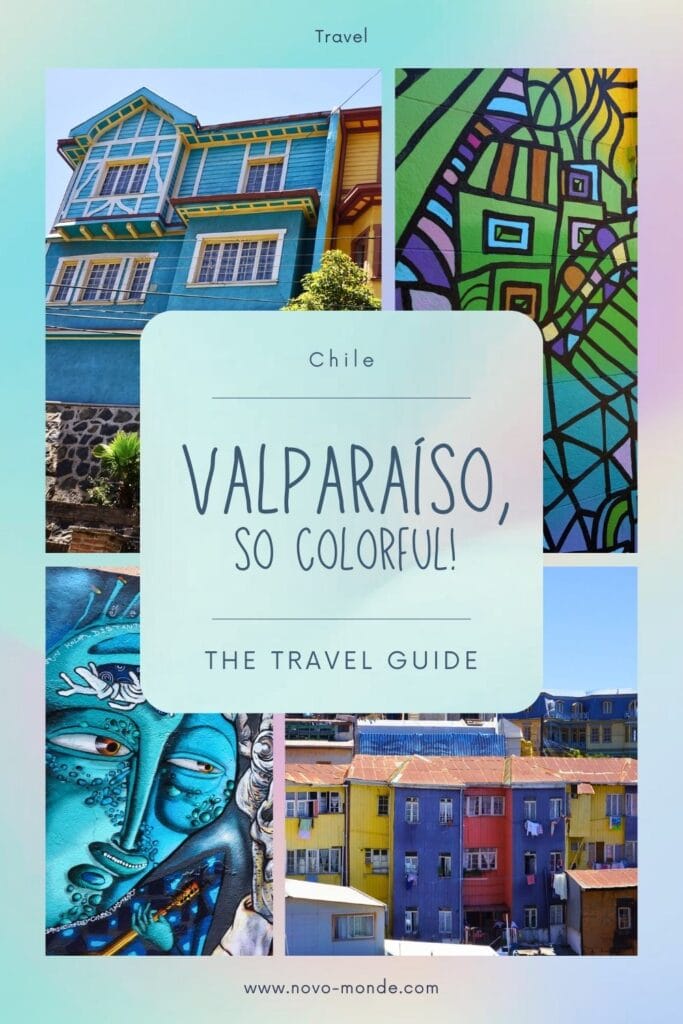
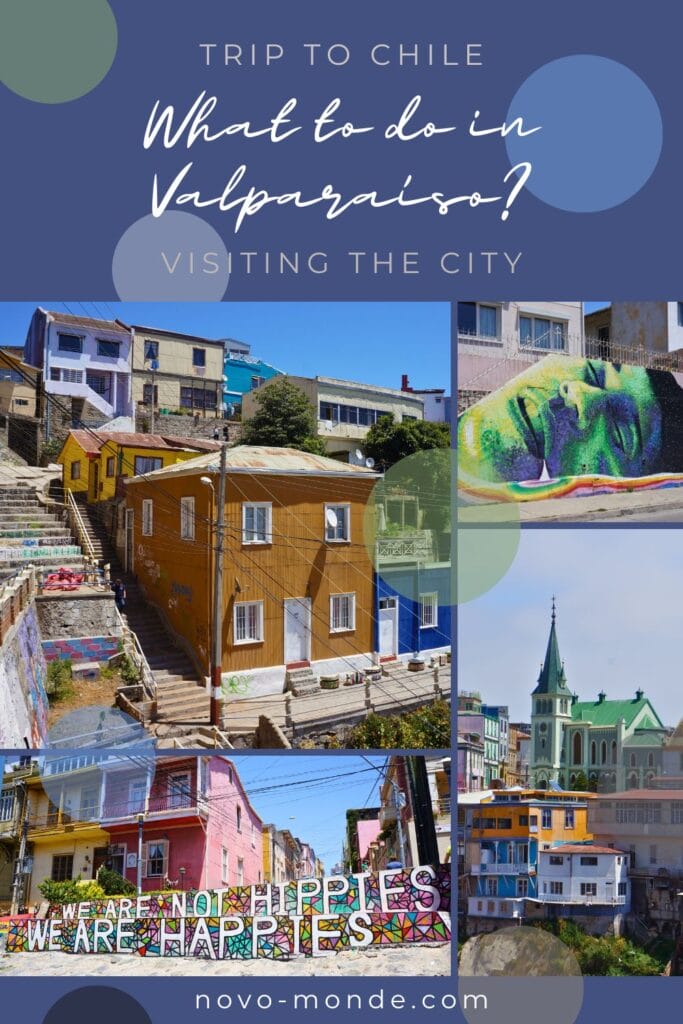
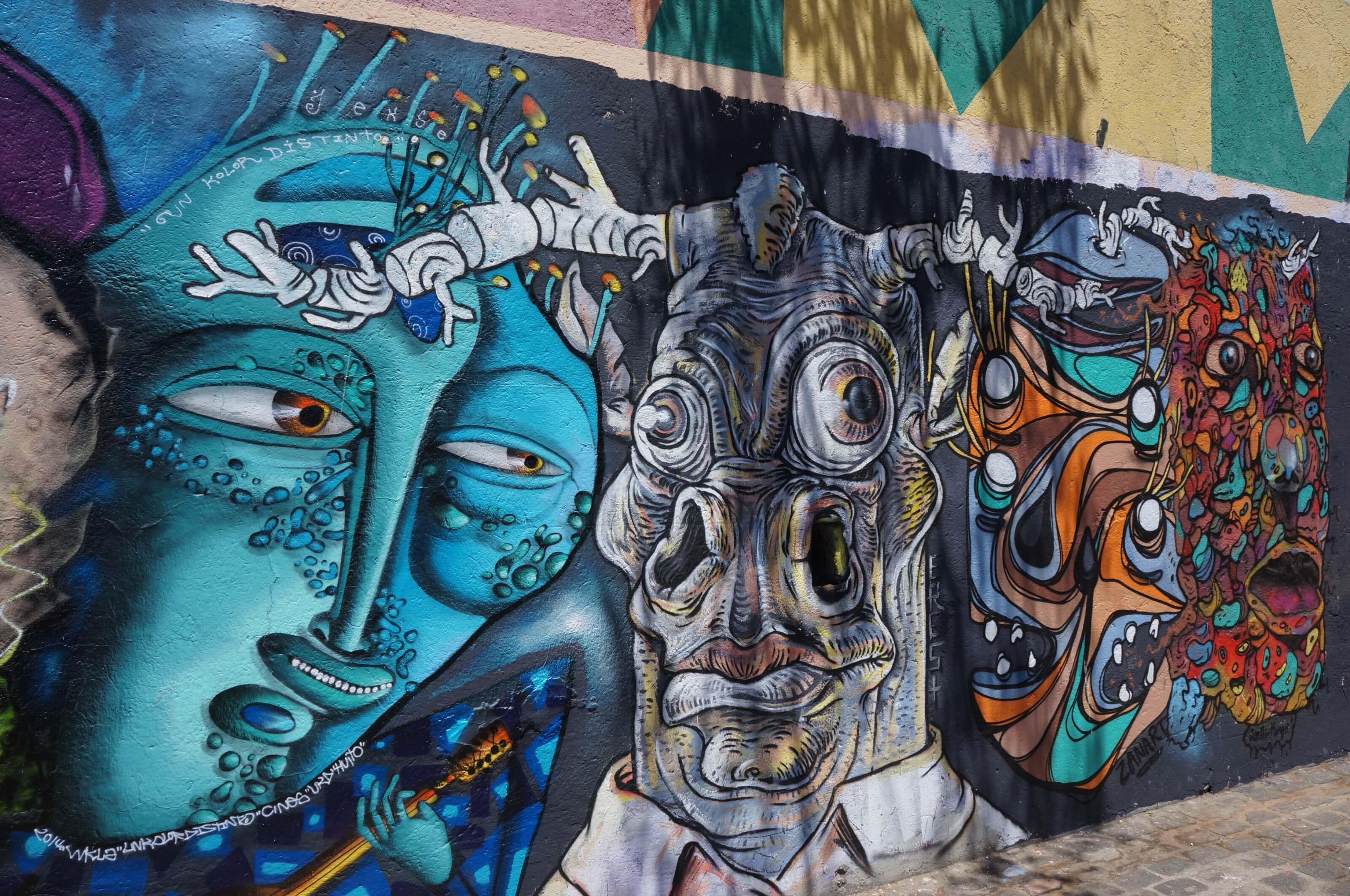
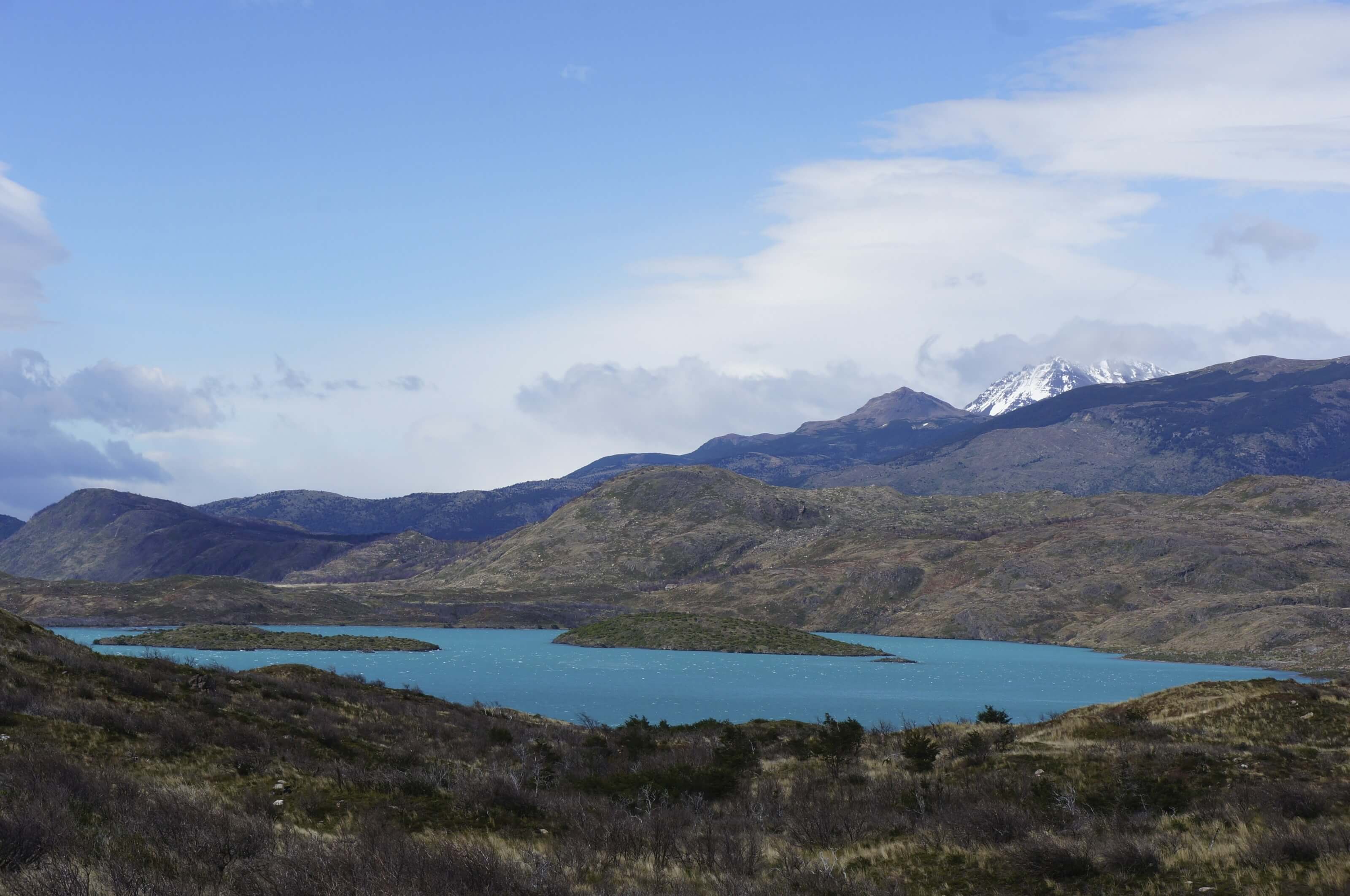
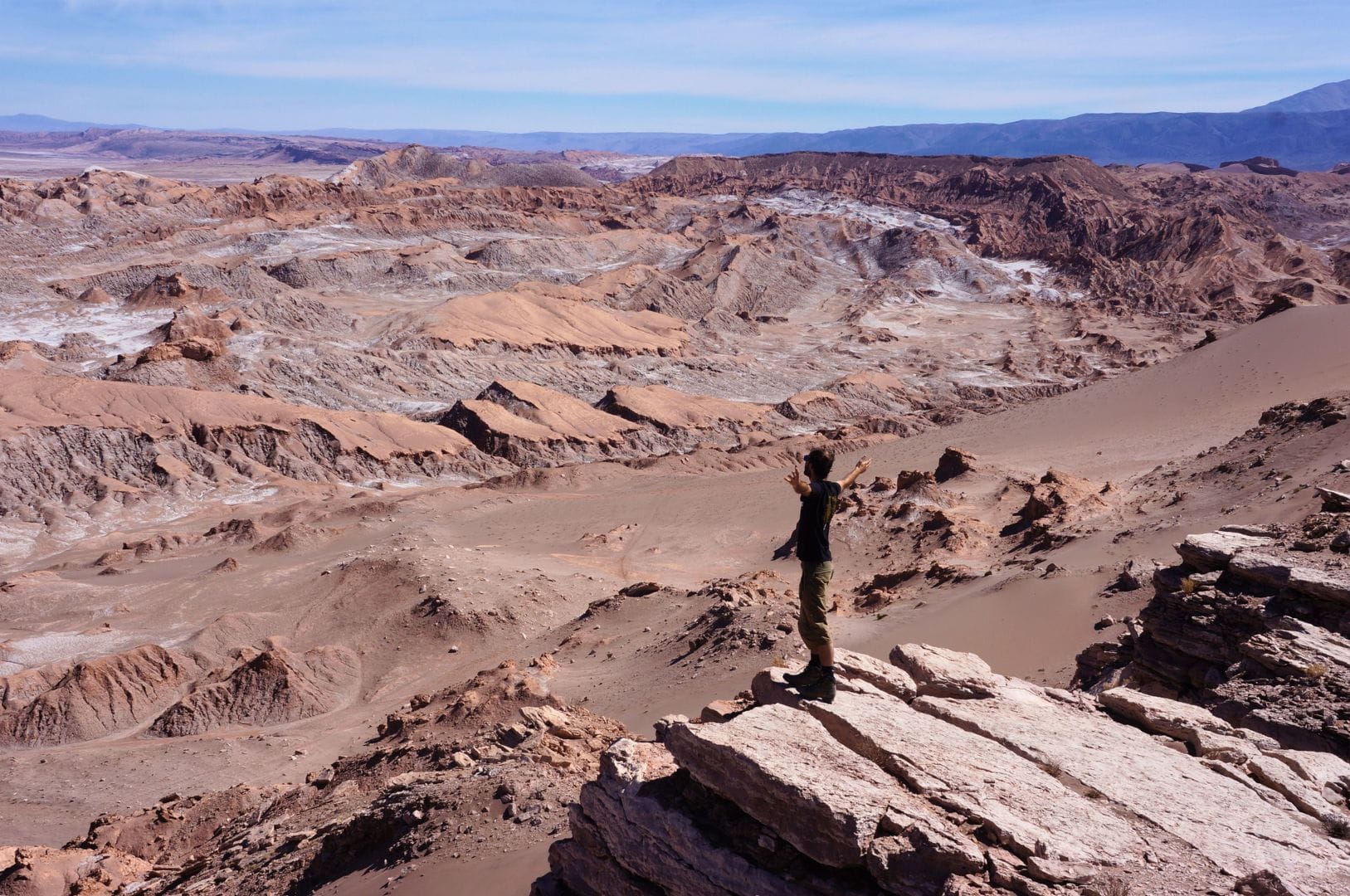
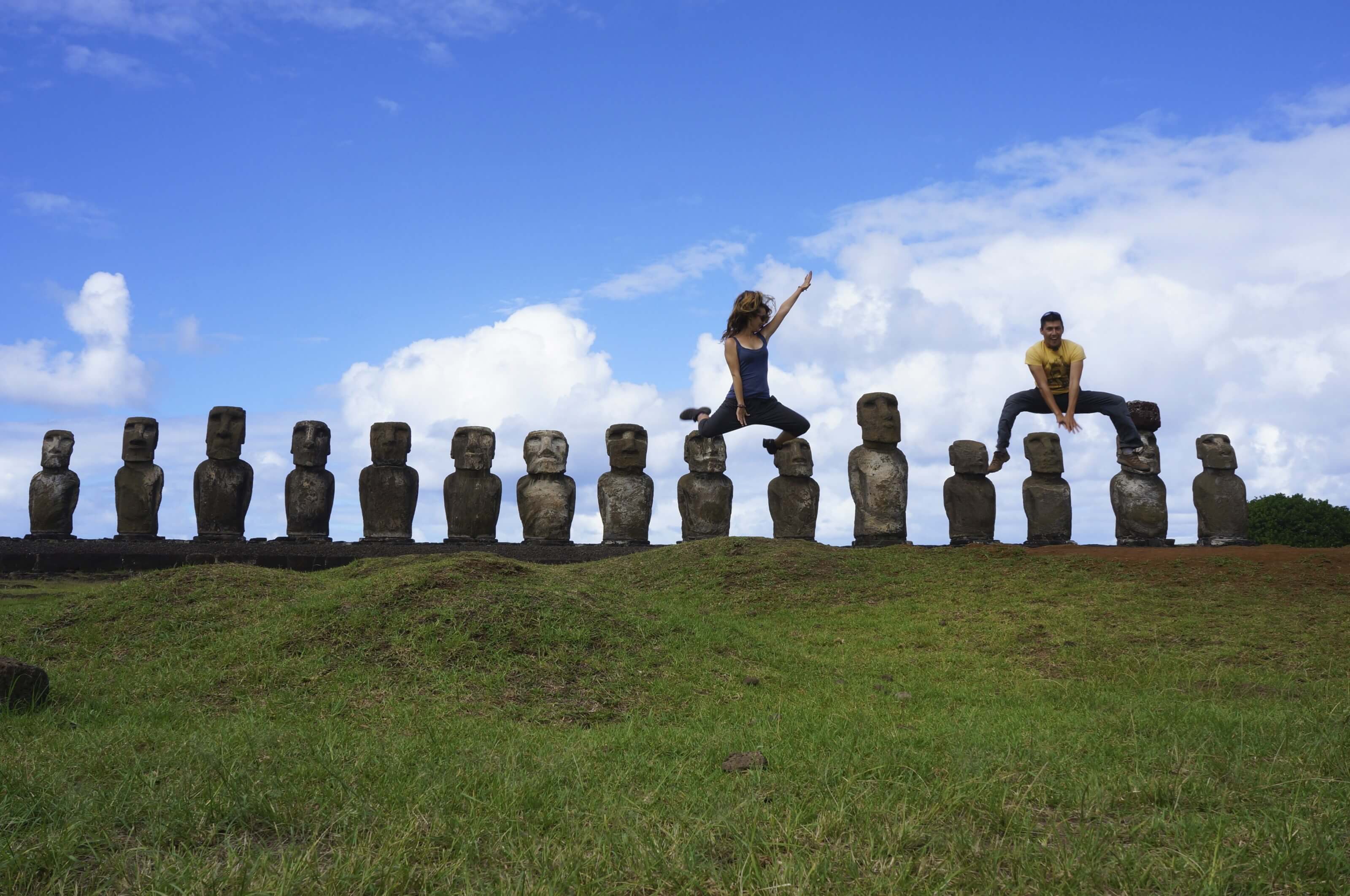
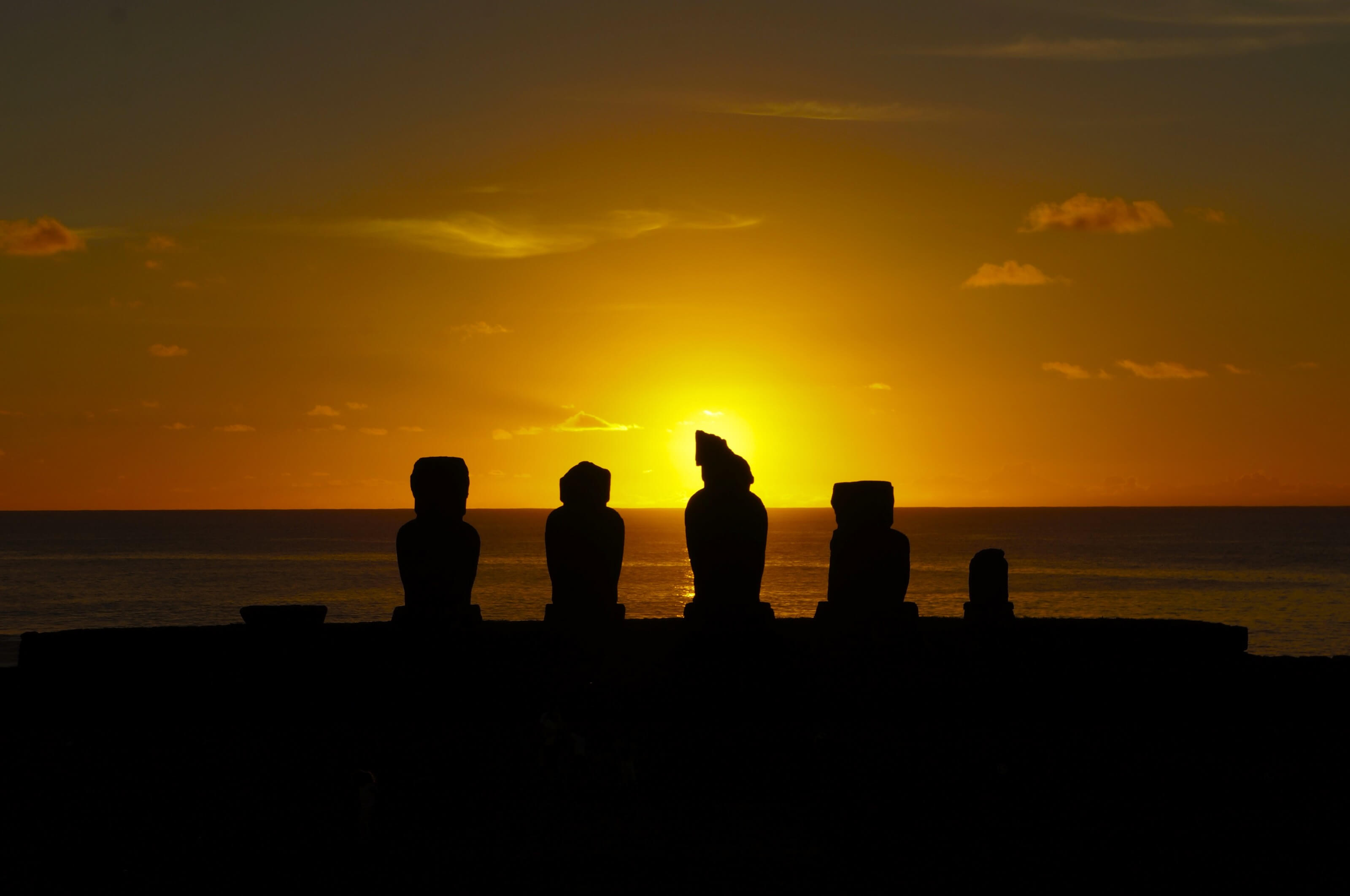
Join the discussion